|
Click on
pictures to enlarge
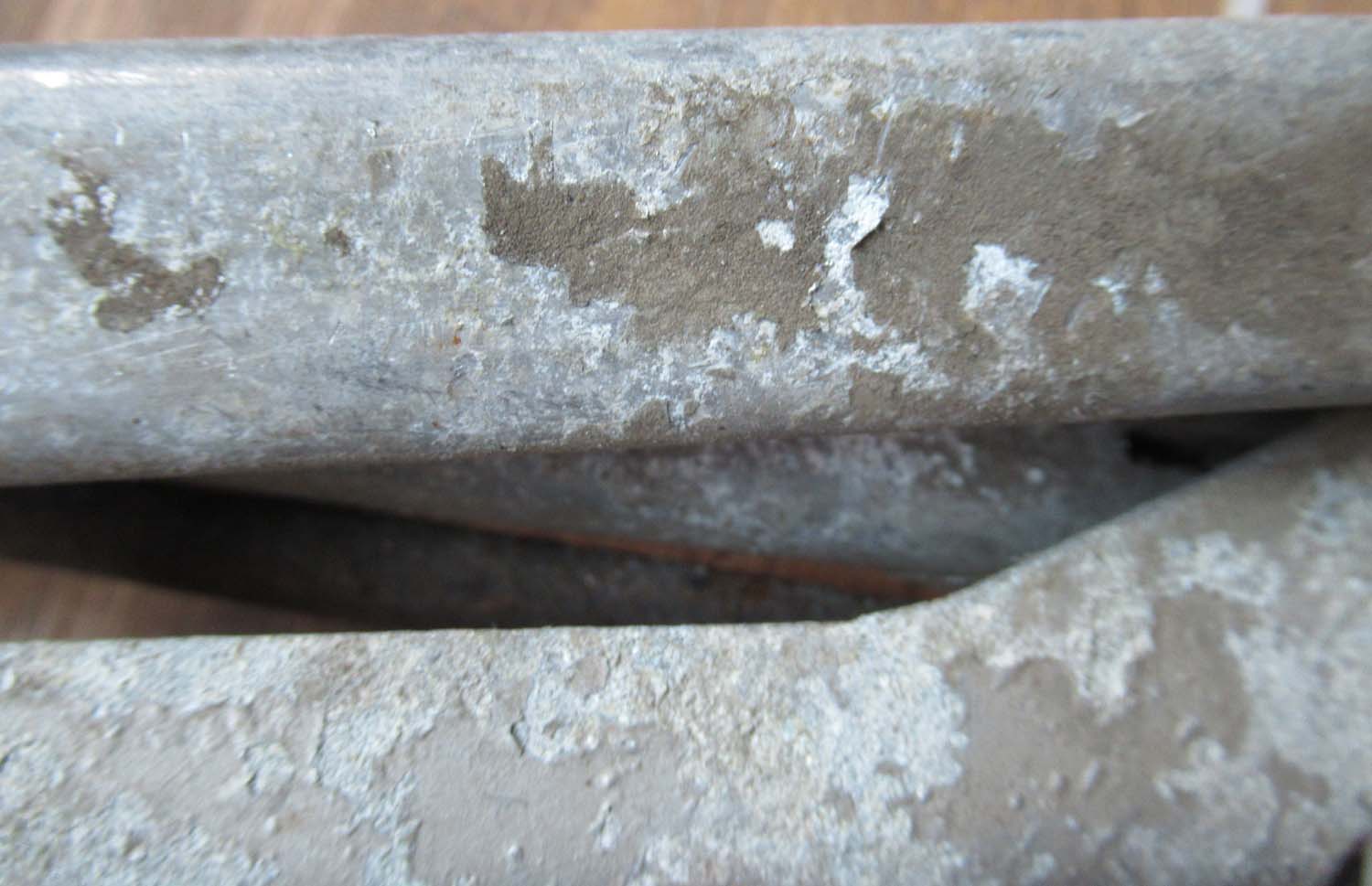
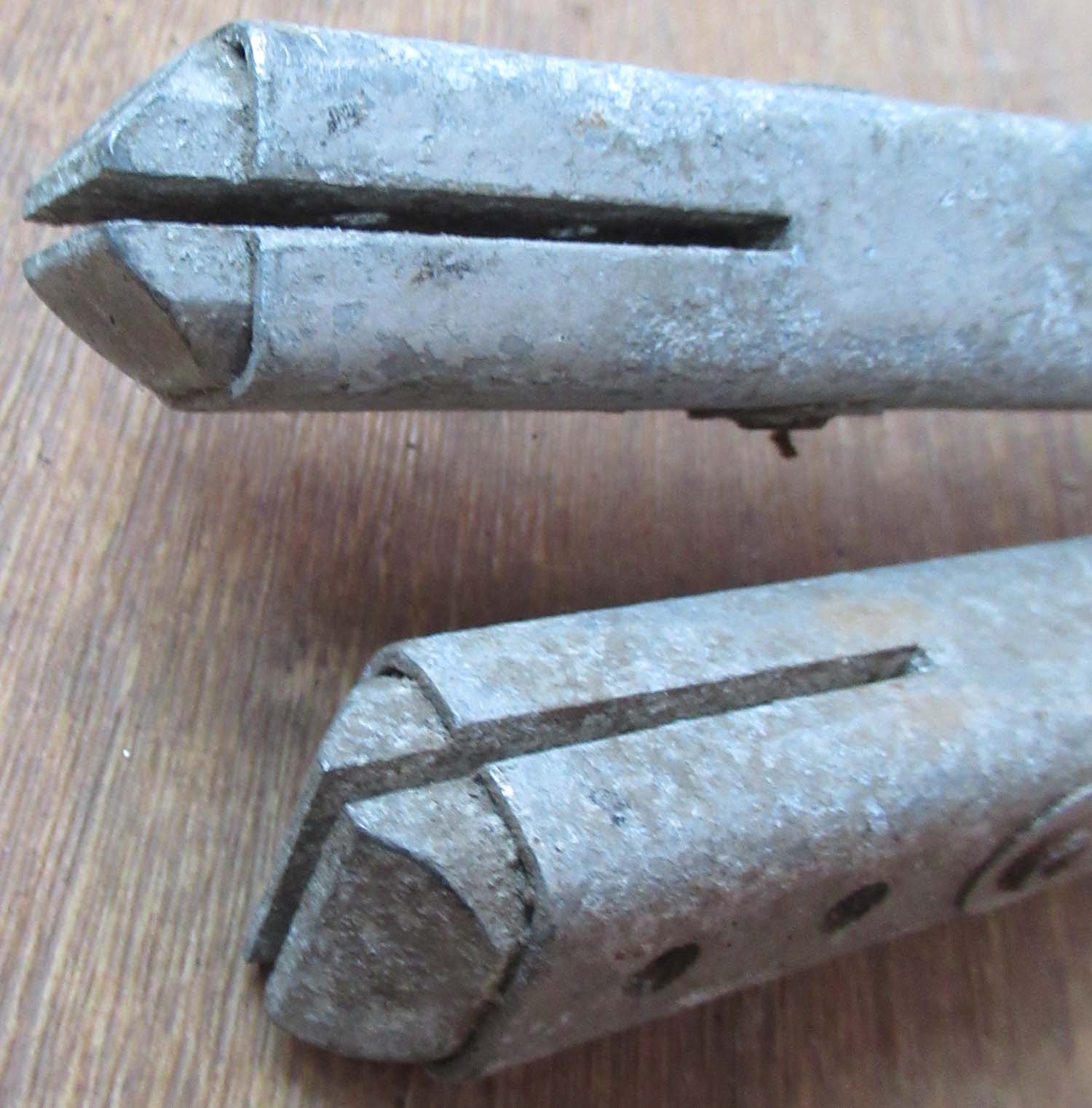
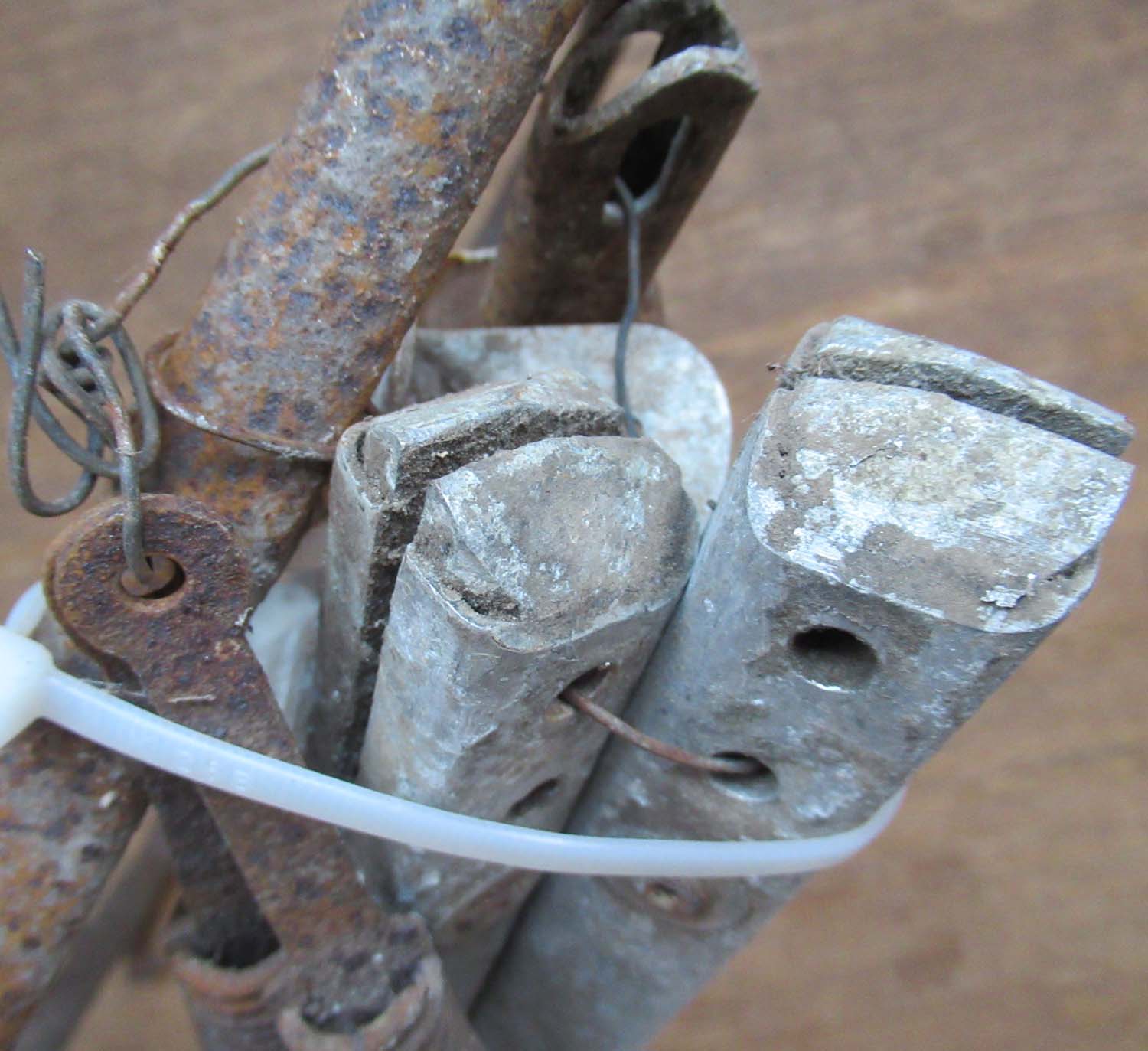
£395


|
Bolingbroke
Gunners Seat Back (No 14 pg 1 Seat)
Here is a nice set comprising of
a Bolingbroke gunners seat back and associated parts.
Imported all the way from
Canada.
The Bolingbroke was a Canadian version
of the Bristol Blenheim IV light bomber, which in turn had
been developed from the civilian prototype Bristol 142.
Although begun in England, the
Bolingbroke name was dropped, except in Canada where they
were built at Fairchild Aircraft Ltd.
There were three versions made,
including a floatplane (only one was built).
After early RCAF service on
coastal patrol, Bolingbrokes served through the war as
bombing and gunnery trainers and as target tugs in the
British Commonwealth Air Training Plan.
Below the Bolingbroke:

Click on
pictures to enlarge

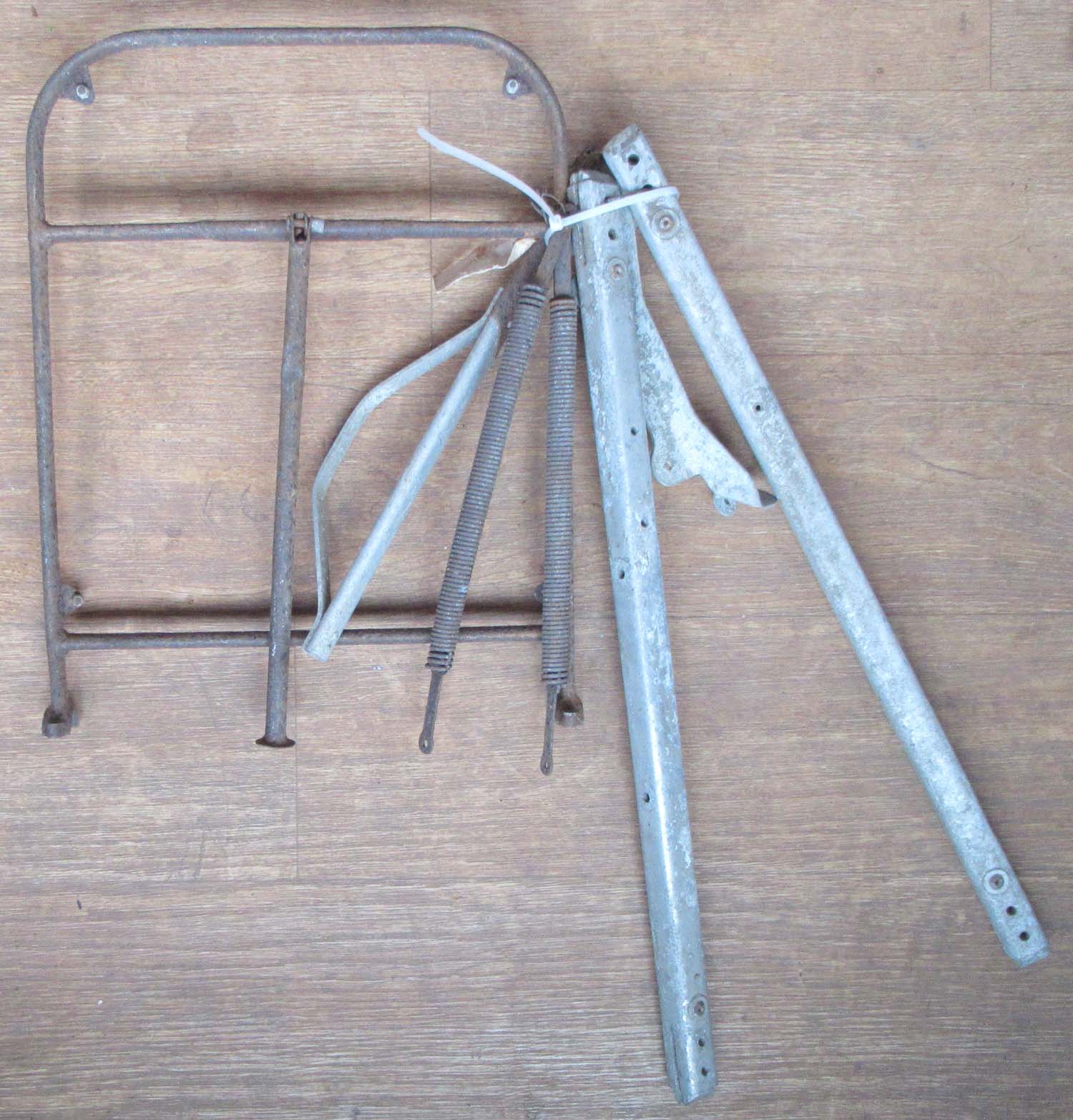
|
|
Click on
pictures to enlarge
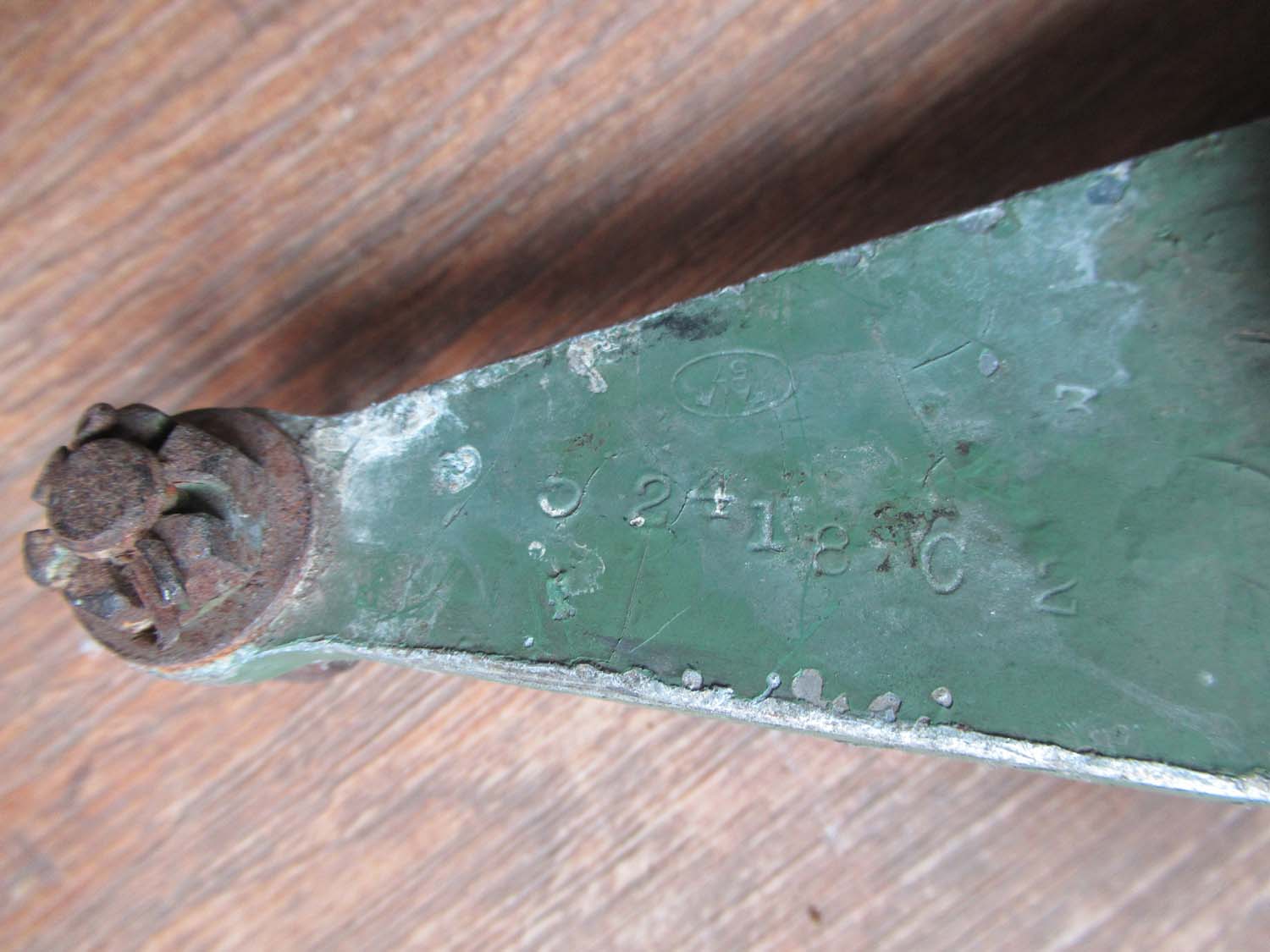
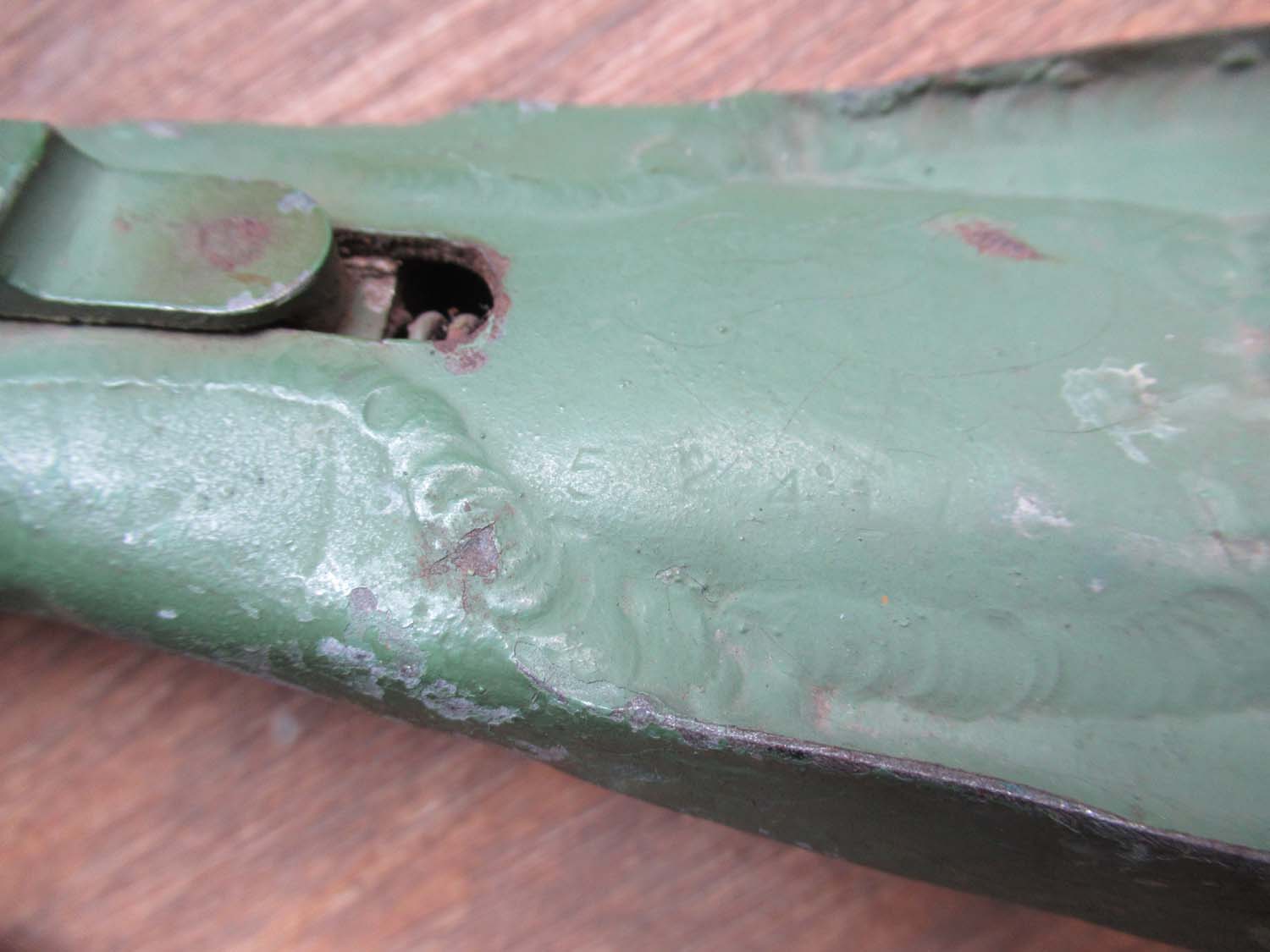
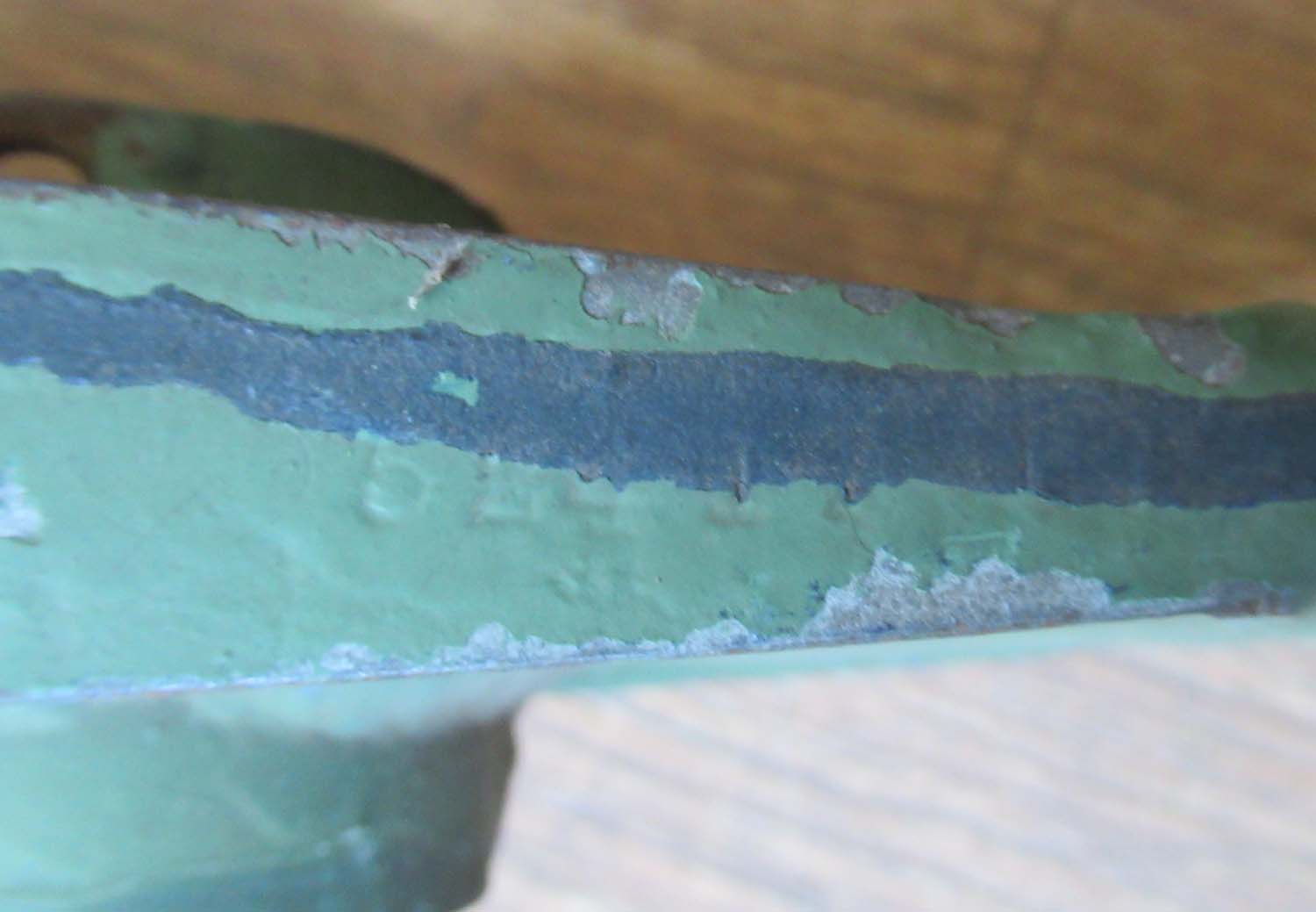

|
Handley Page Hamden Seat
Adjuster
(No 13 pg 1 Seat)
Here we
have a super rare seat adjuster from a Hampden Bomber. In
good original condition.

Sleek and
manoeuvrable, the Handley-Page Hampden had a distinctive,
deep fuselage which gracefully tapered to a slender tail
boom. It was said to have been, "a great aircraft to fly
with excellent visibility from the cockpit, and responsive,
superior handling characteristics even at low speeds. It had
a good range and could carry a respectable bomb load.
However, it was very cold and was not fitted with powered
gun turrets like the other twin-engine bombers. As well, the
Hampden became known as the "Flying Suitcase" because of its
cramped crew conditions.
The Hampden
entered service in 1938 and eight squadrons were operational
at the beginning of the war. They were in action
immediately, raiding enemy naval installations and ships
until the daylight formations began encountering enemy
fighters. Casualties became so heavy the Hampden was taken
off operations, re-equipped with better armour and armament,
and then used only at night.
Click on
pictures to enlarge
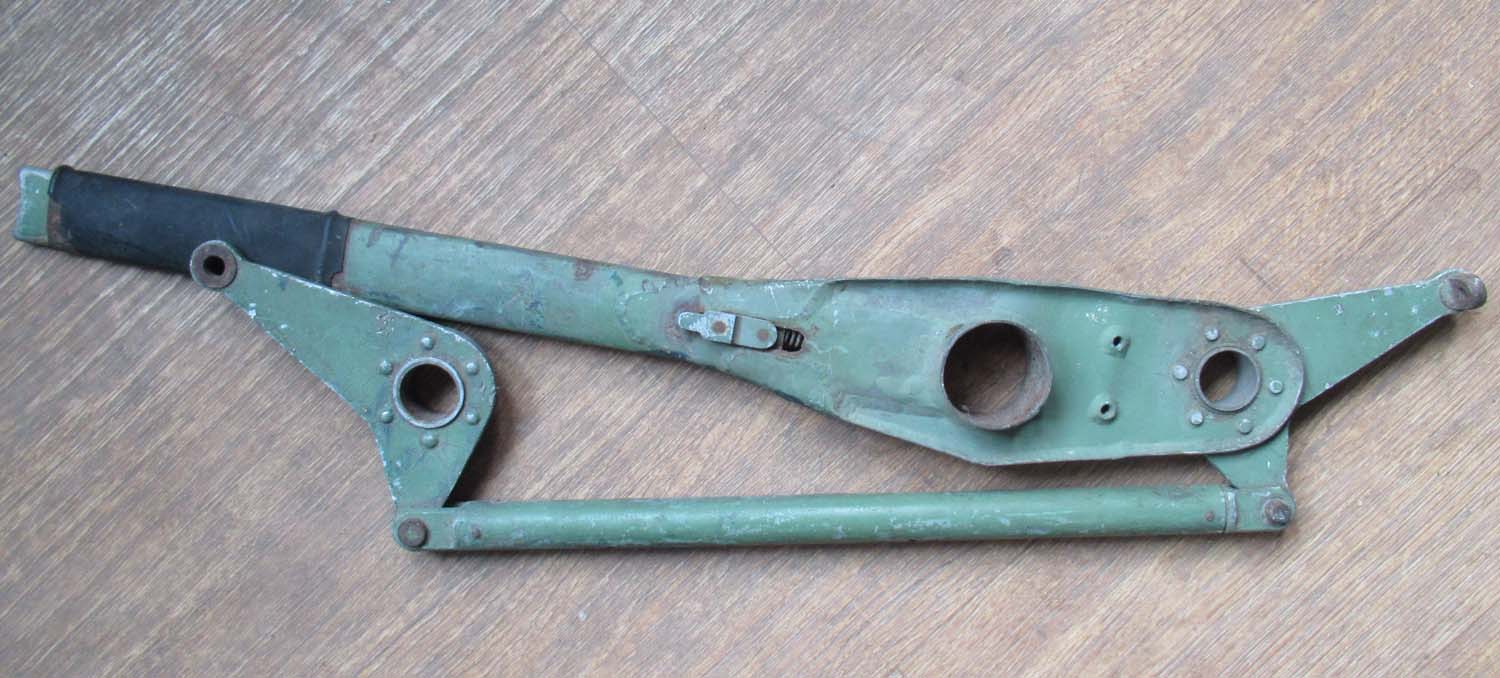
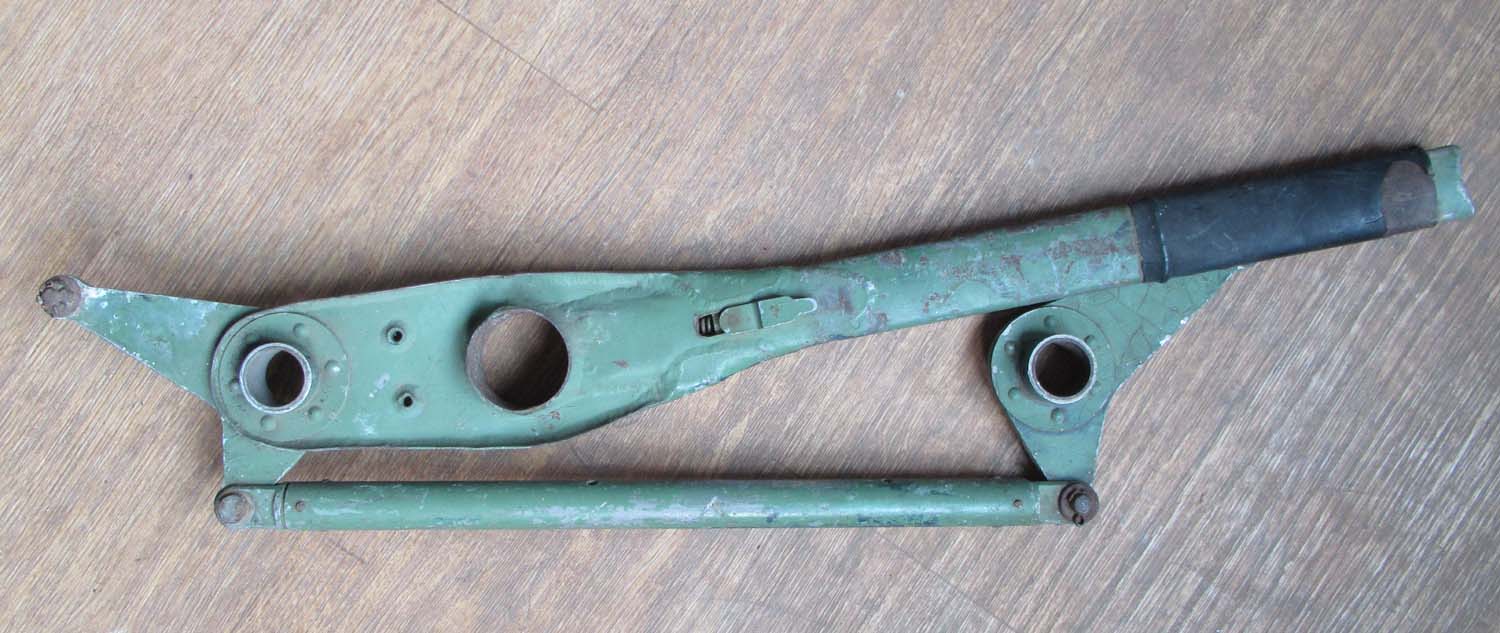
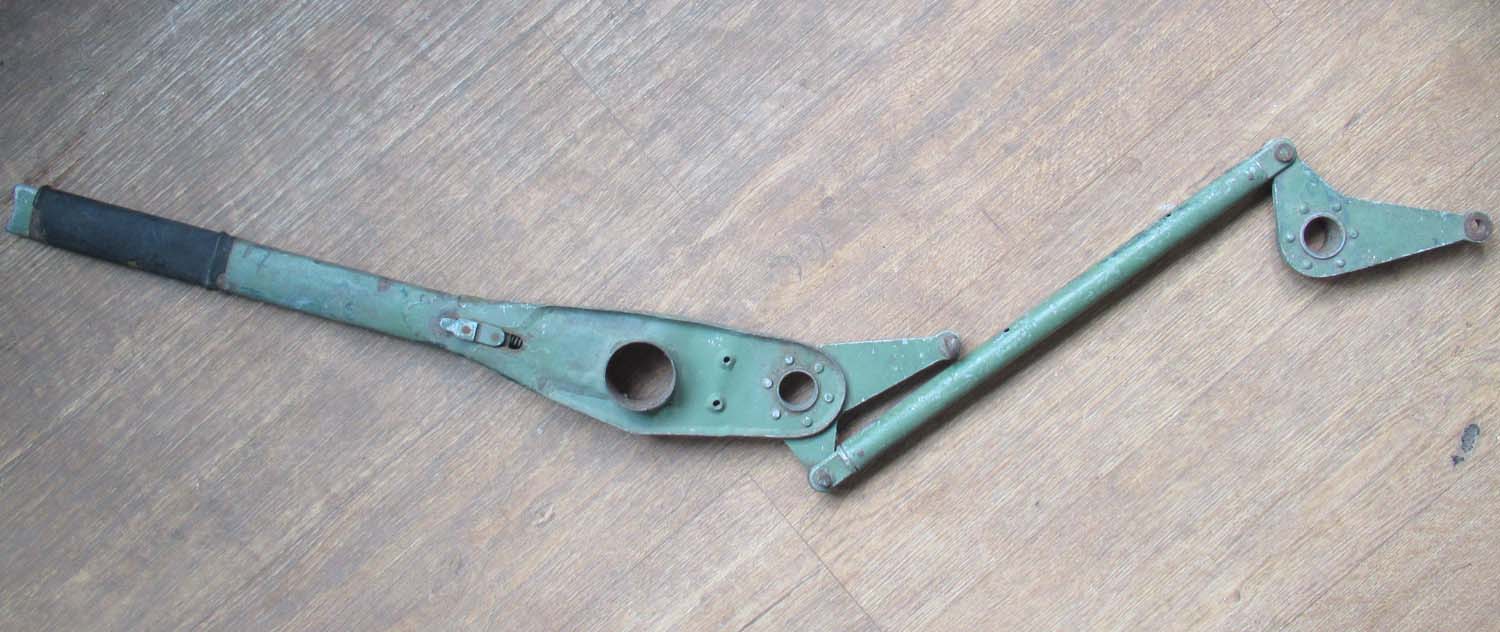 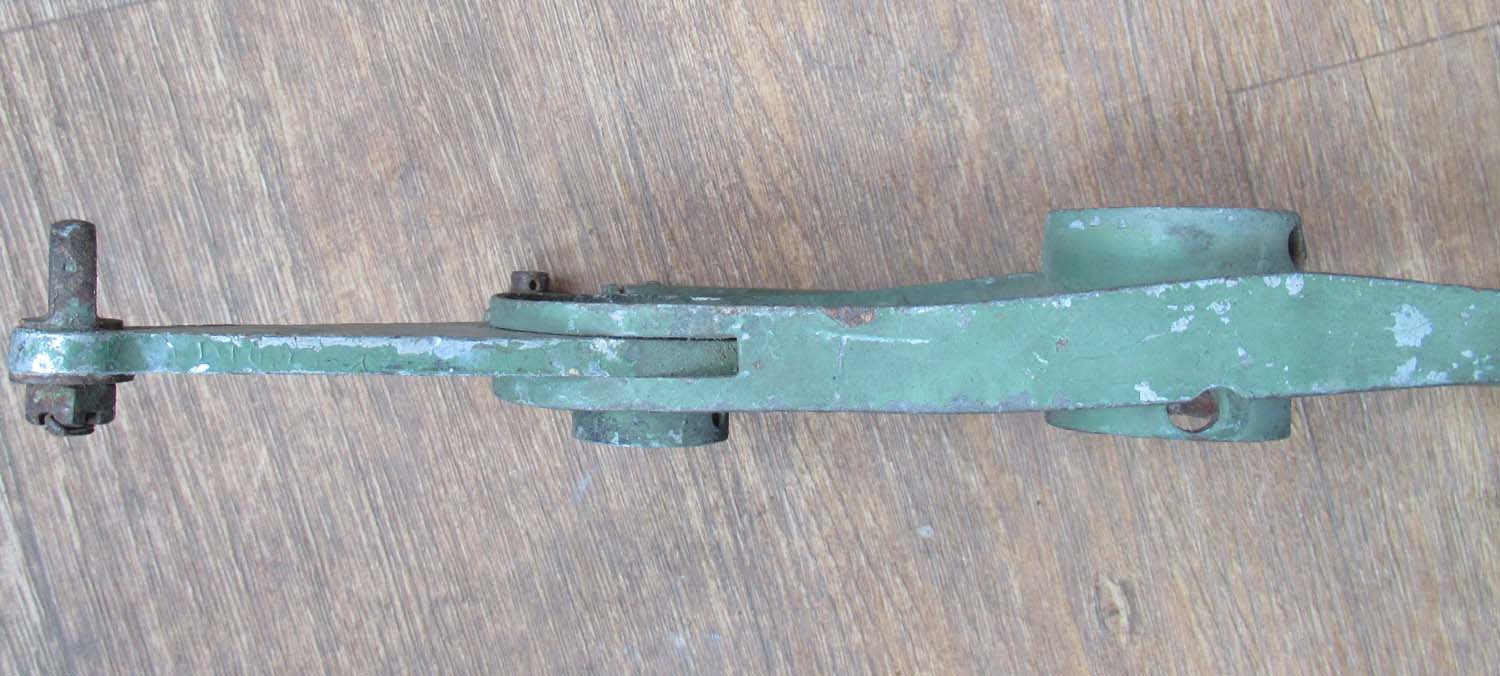
£375


|
|
Click on
pictures to enlarge
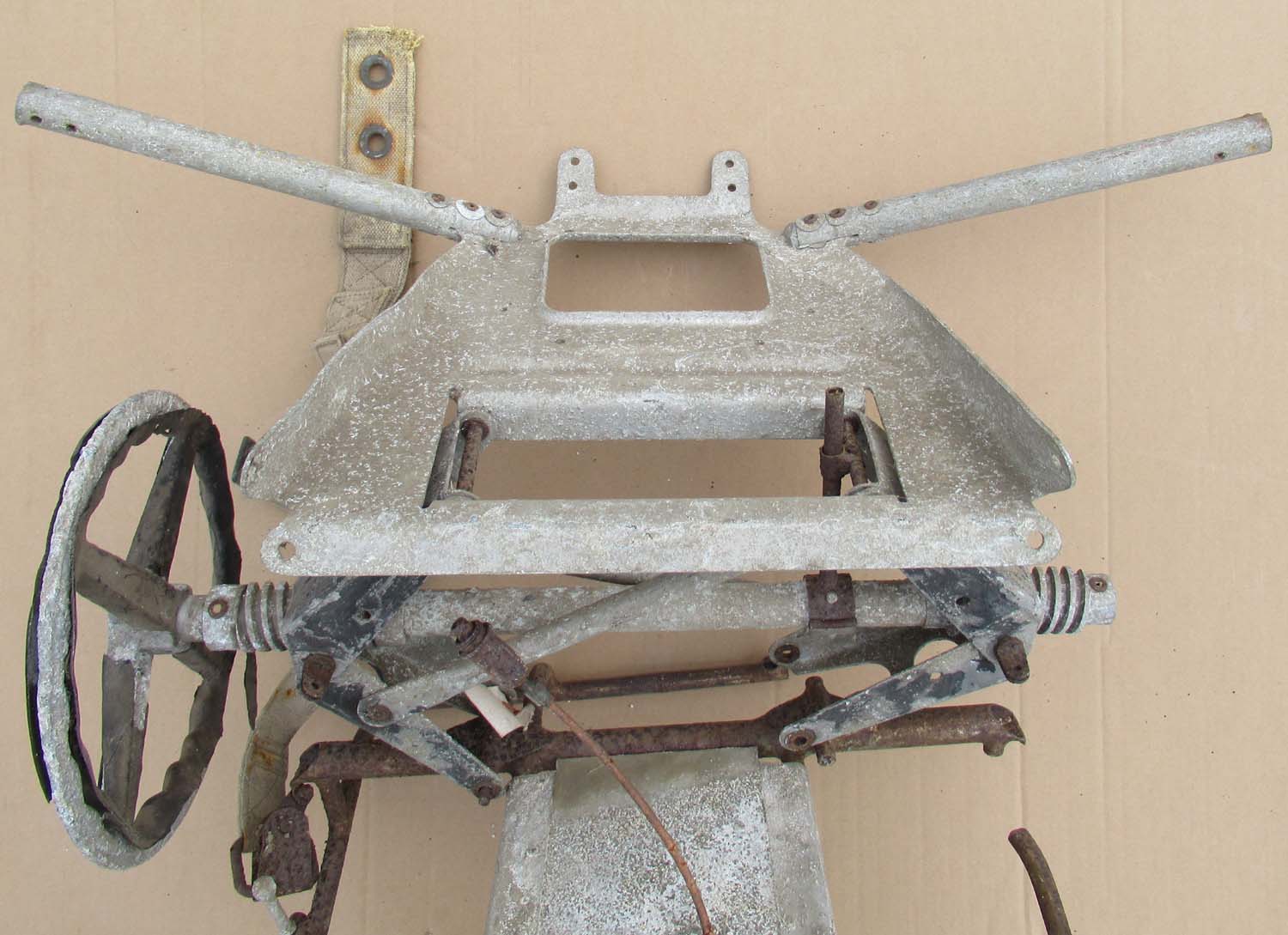
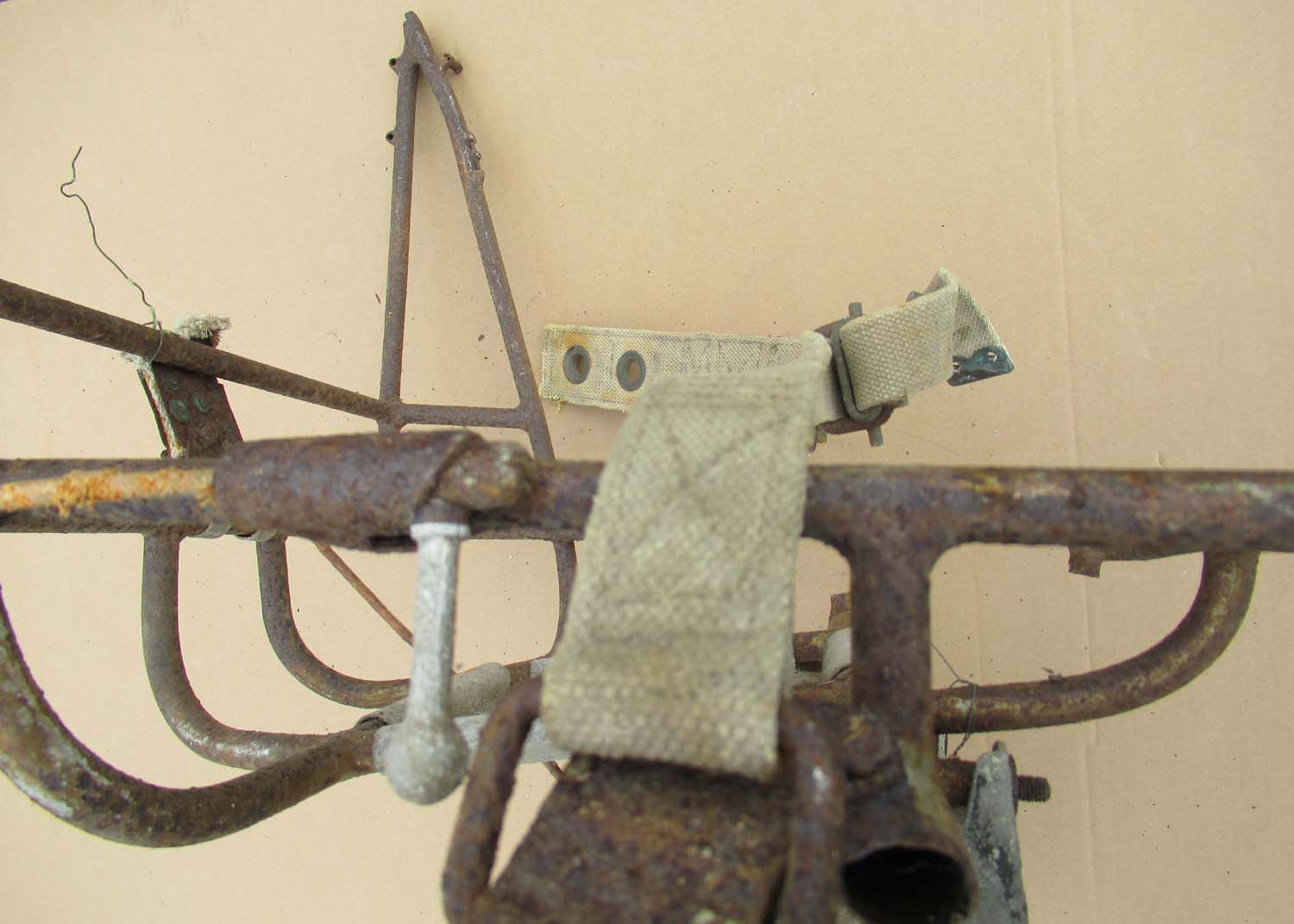
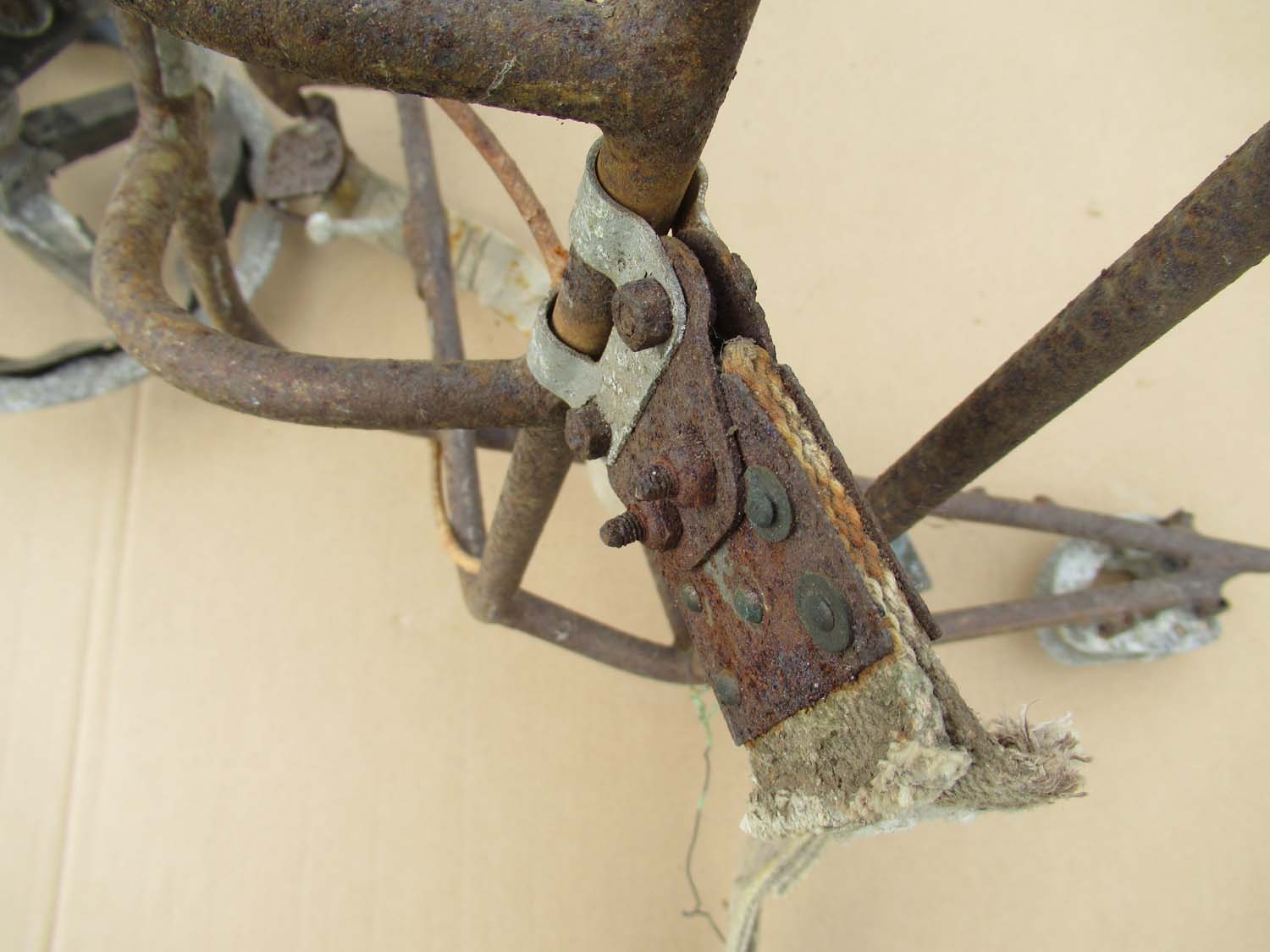
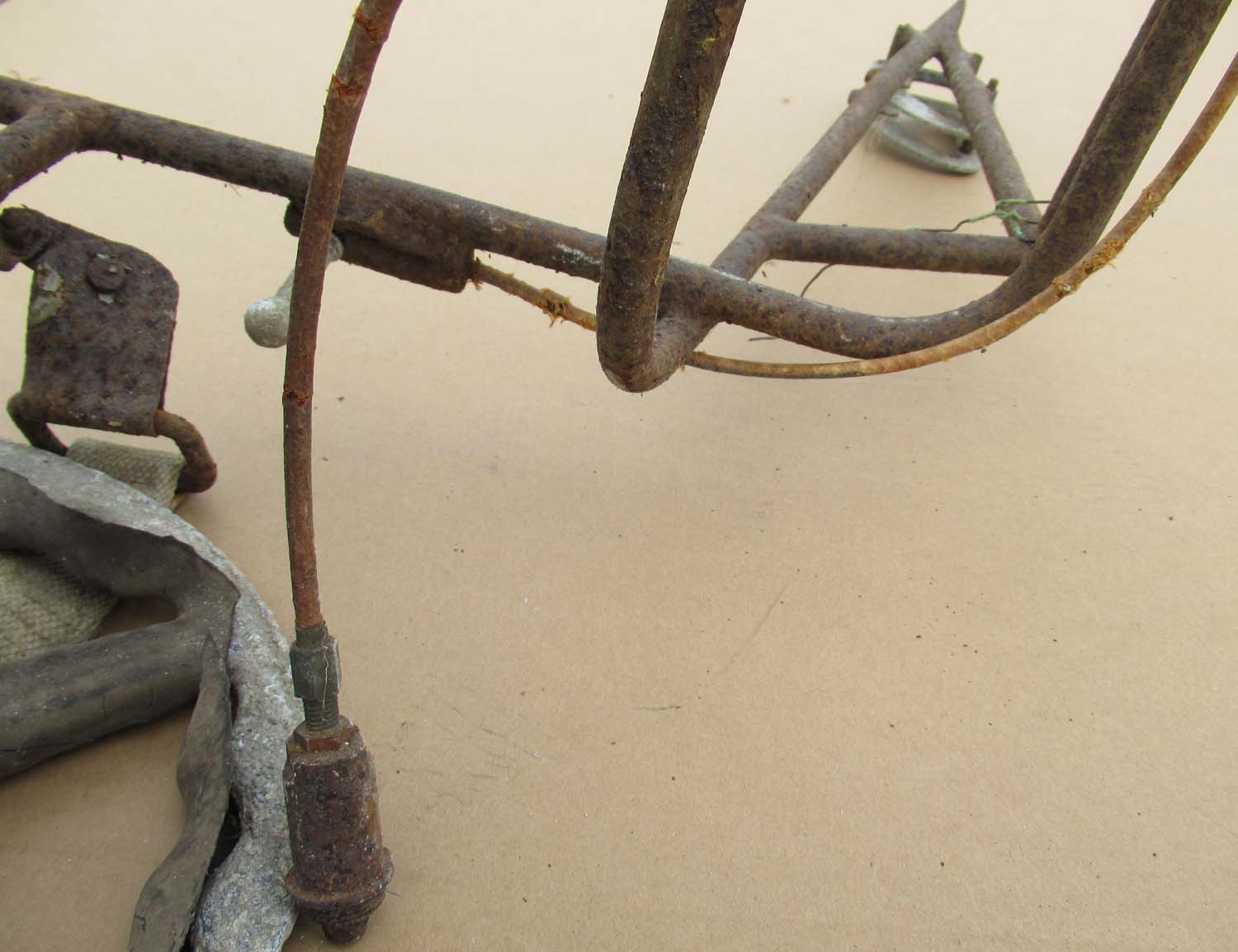
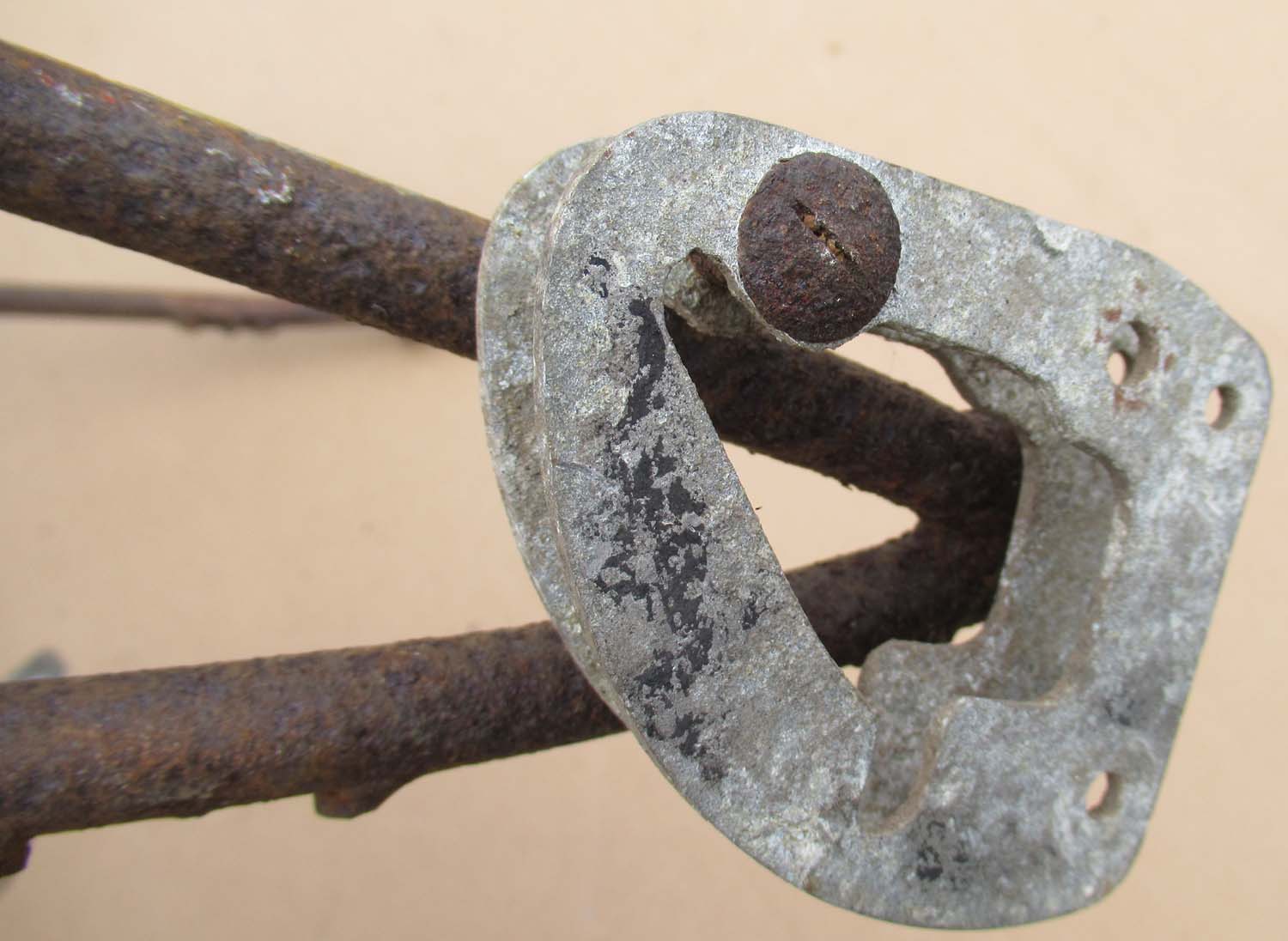
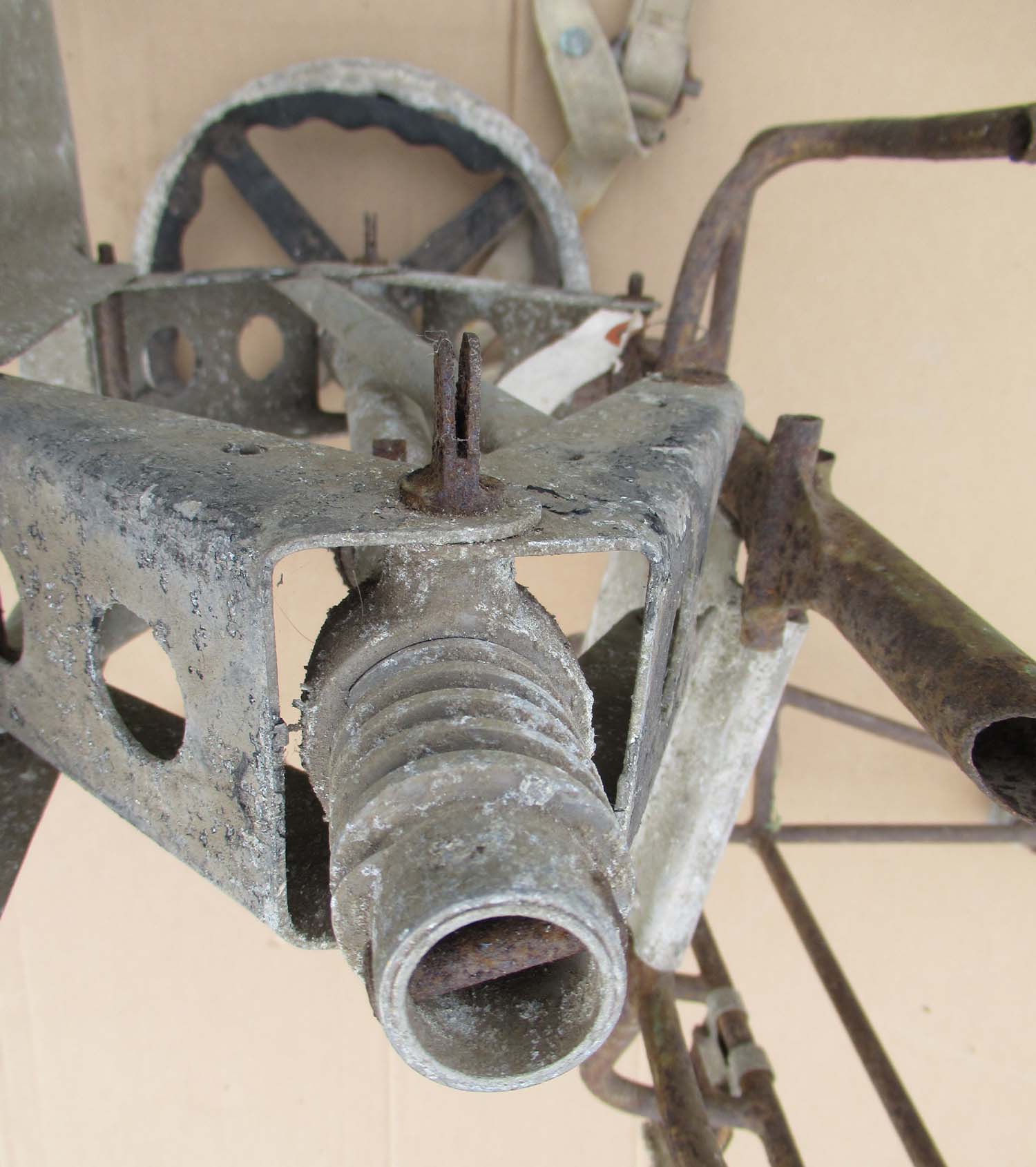
|
Westlands Lysander Seat
(No 12 pg 1 Seat)
Here we
have a absolutely stunning and rare seat from a Lysander.
Parts from this aircraft almost never appear this appears to
be a complete frame with its seat adjuster in the form
of a wheel.
We have a collection of Lysander parts that make
up the main components of the cockpit. If anyone was
thinking of building a cockpit these are the parts you need.
I cannot stress how hard to find these parts are in all the
20 plus years I have been collecting and trading I have only
seen small parts of this aircraft.
Currently
we also have a prop spinner, complete control column
assembly with original spade grip and substantial mounting
cross member and the engine mounting plate , these are all
listed in their relevant categories.
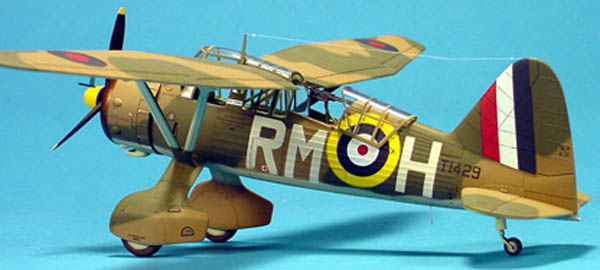
The Westland Lysander is a
British army co-operation and liaison aircraft produced by
Westland Aircraft that was used immediately before and
during the Second World War.
After becoming obsolete in the army co-operation role, the
aircraft's short take off performance enabled clandestine
missions using small improvised airstrips behind enemy
lines to place or recover agents, particularly in occupied
France with the help of the French Resistance.
During the Battle of Britain
this amazingly versatile aircraft was fitted with 20mm
cannons mounted on the undercarriage as the RAF were short
of ground attack aircraft in the event of an invasion.
Click on
pictures to enlarge
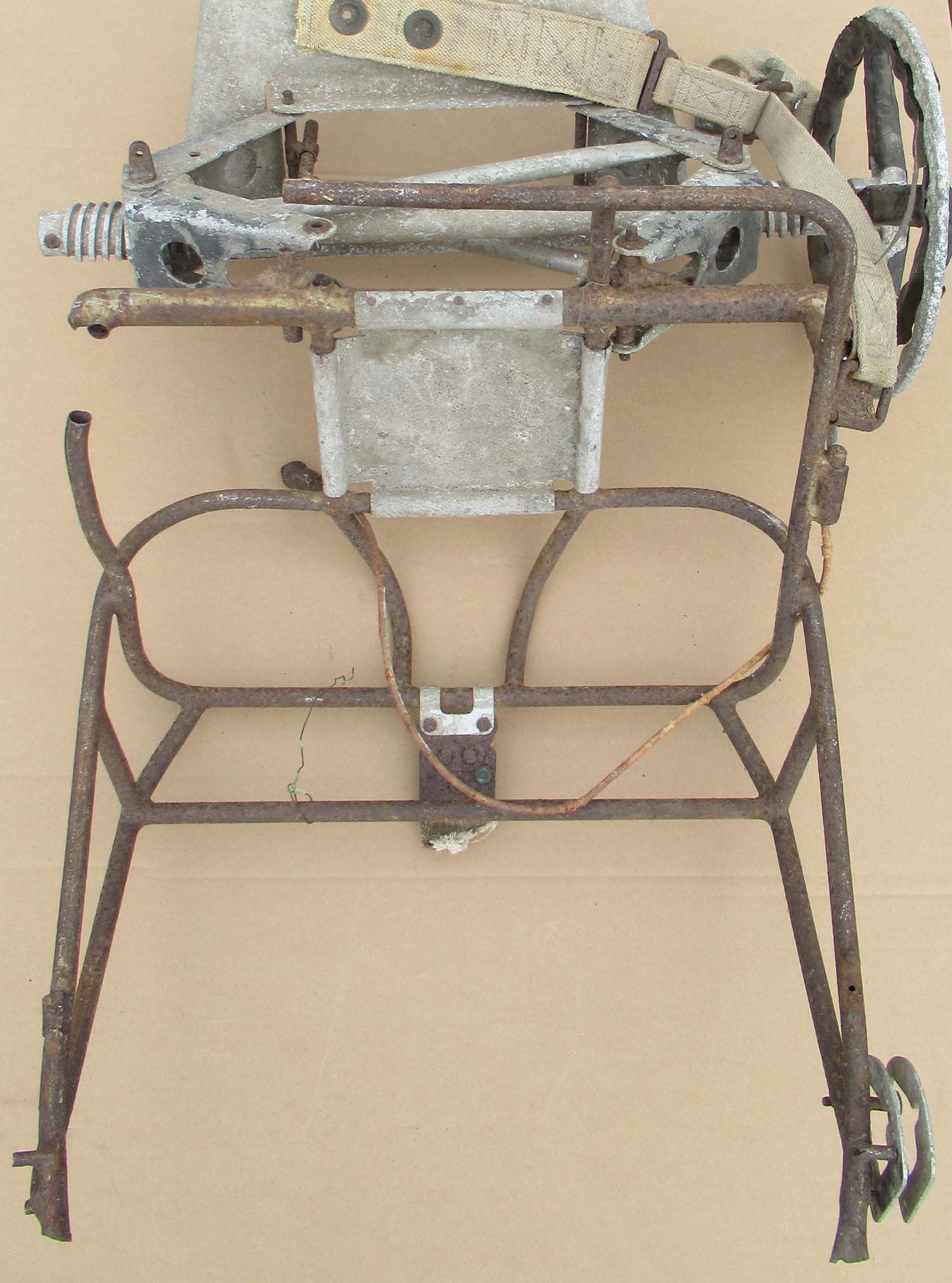

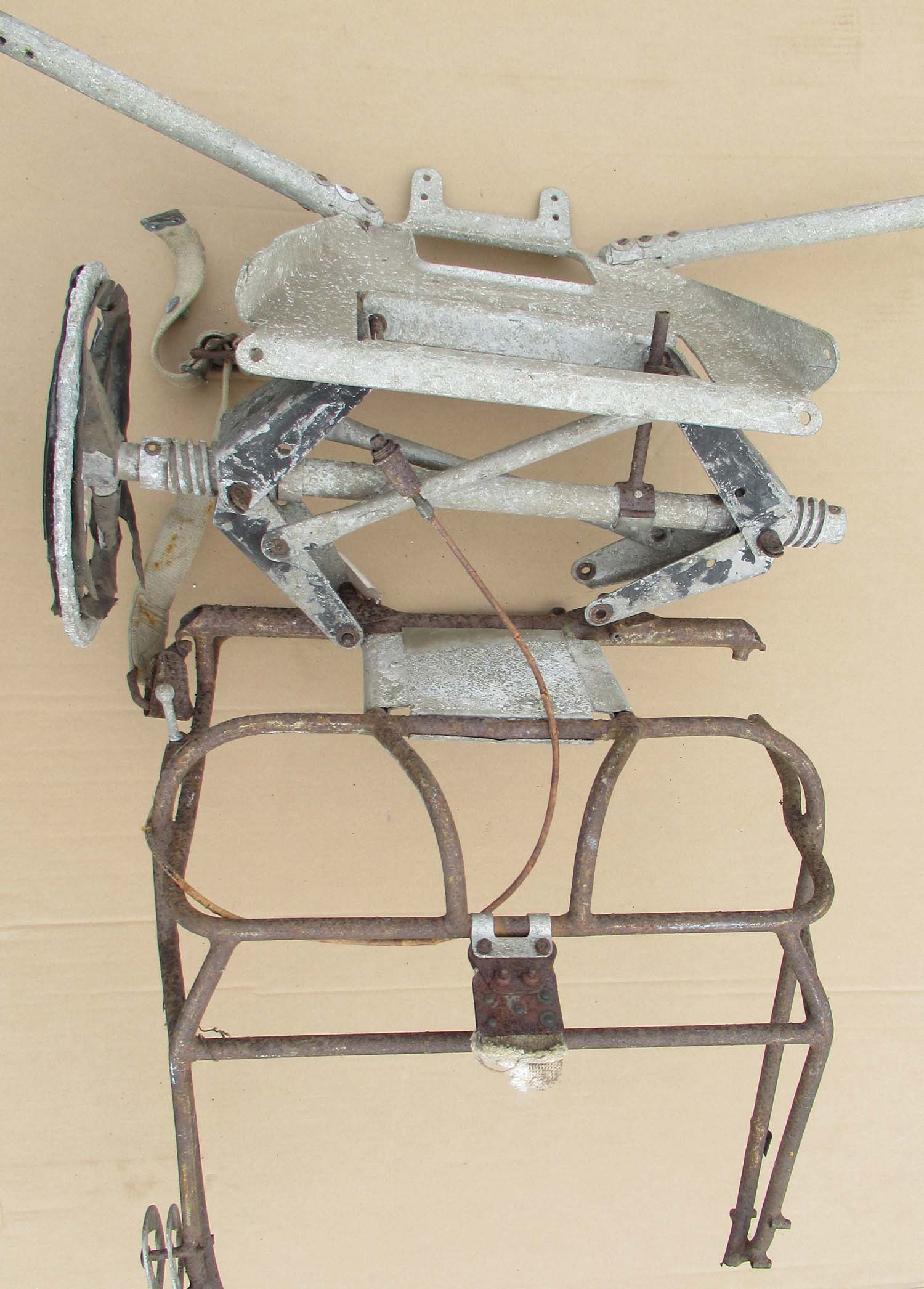
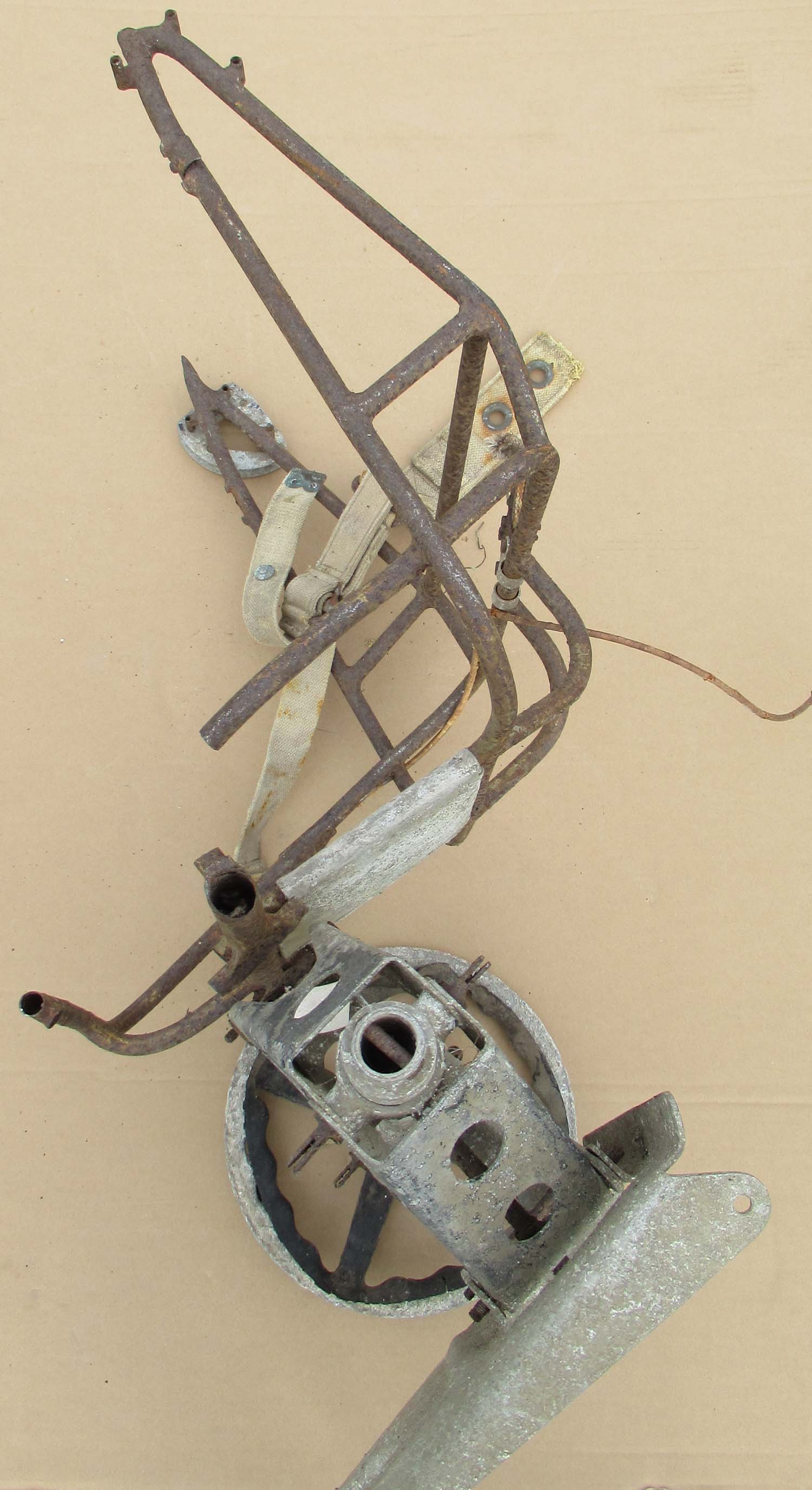
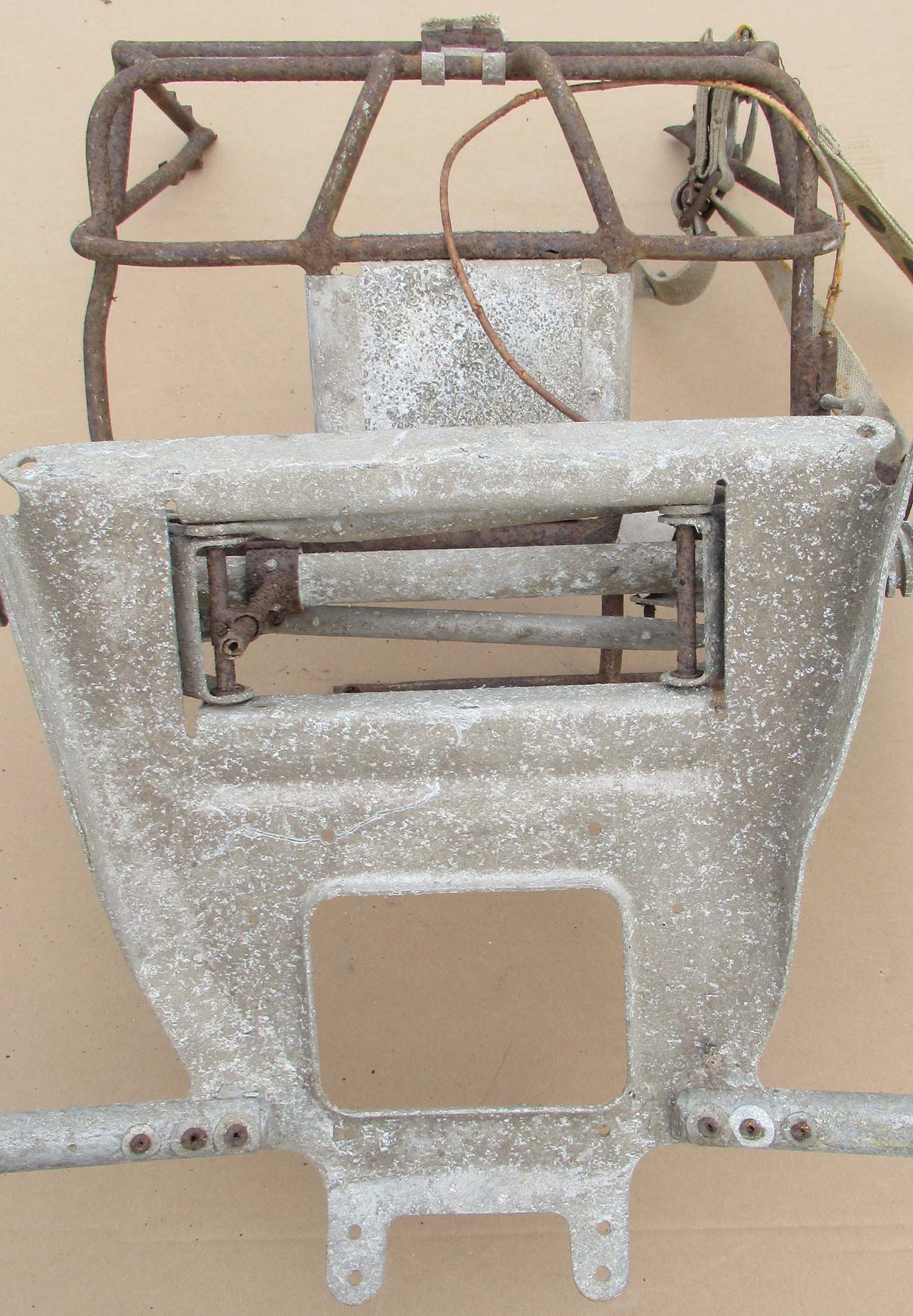
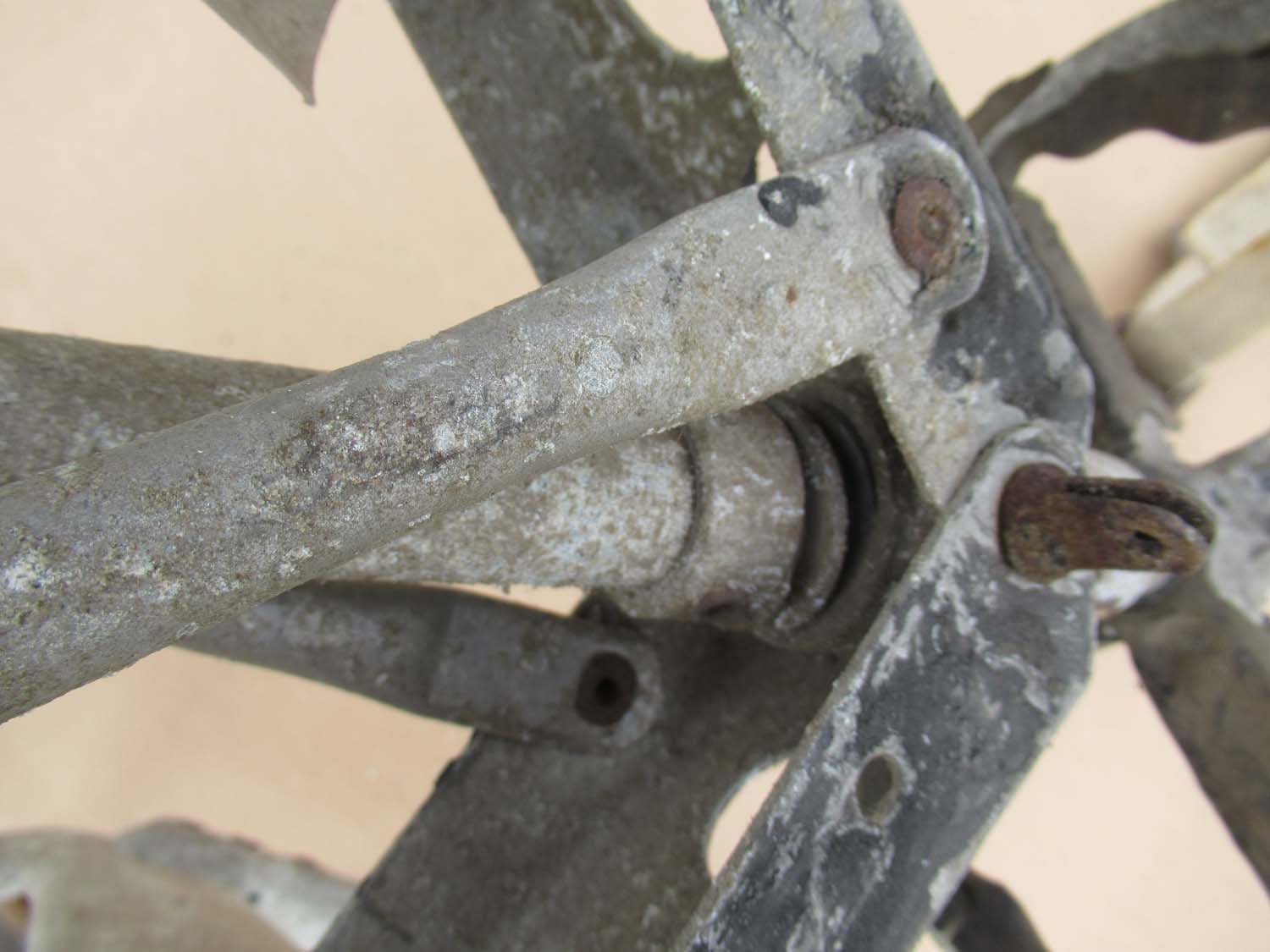
£1795


This
item is large overseas buyers please
contact me for a shipping quote
|
|
Click on
pictures to enlarge
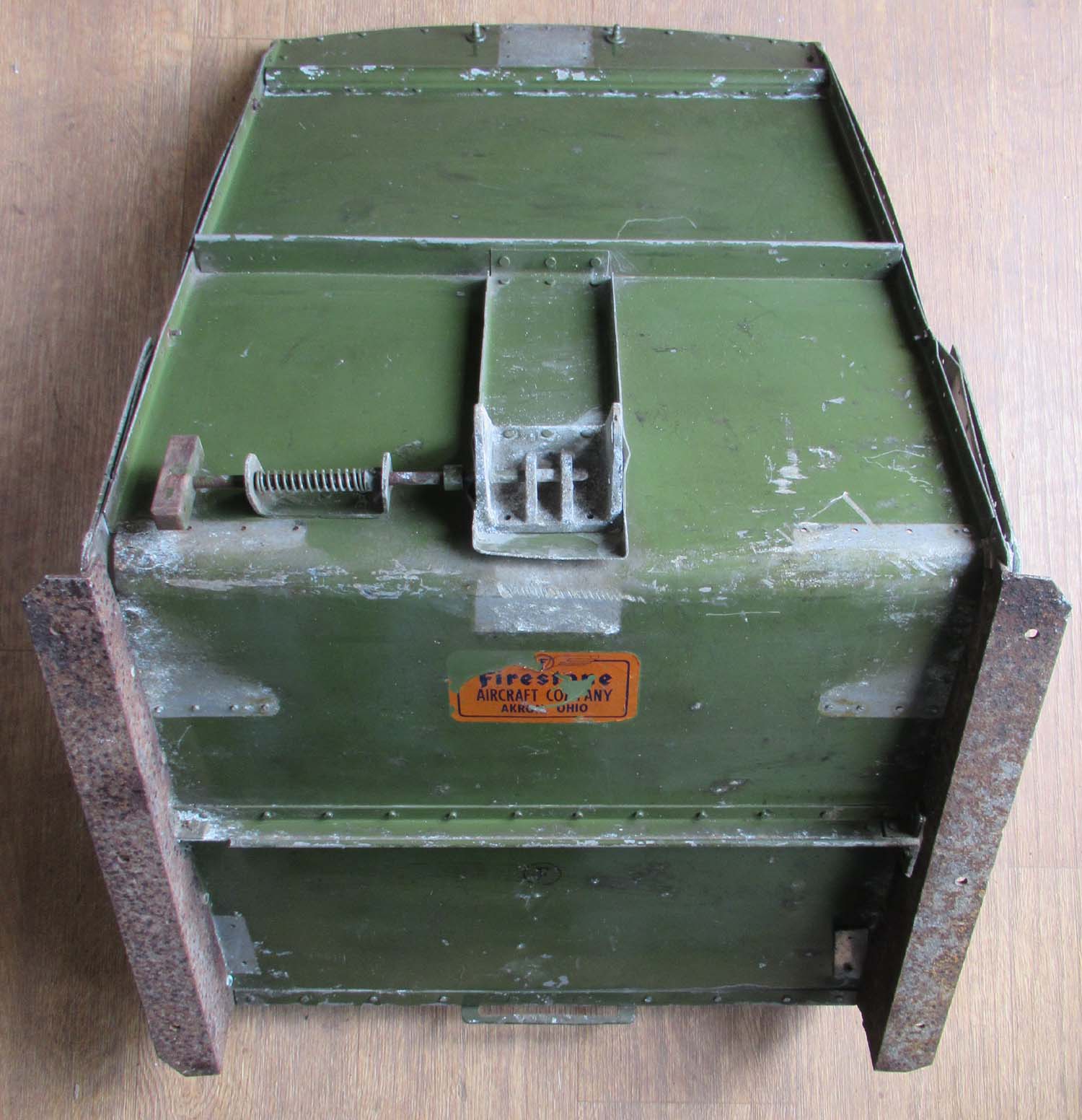
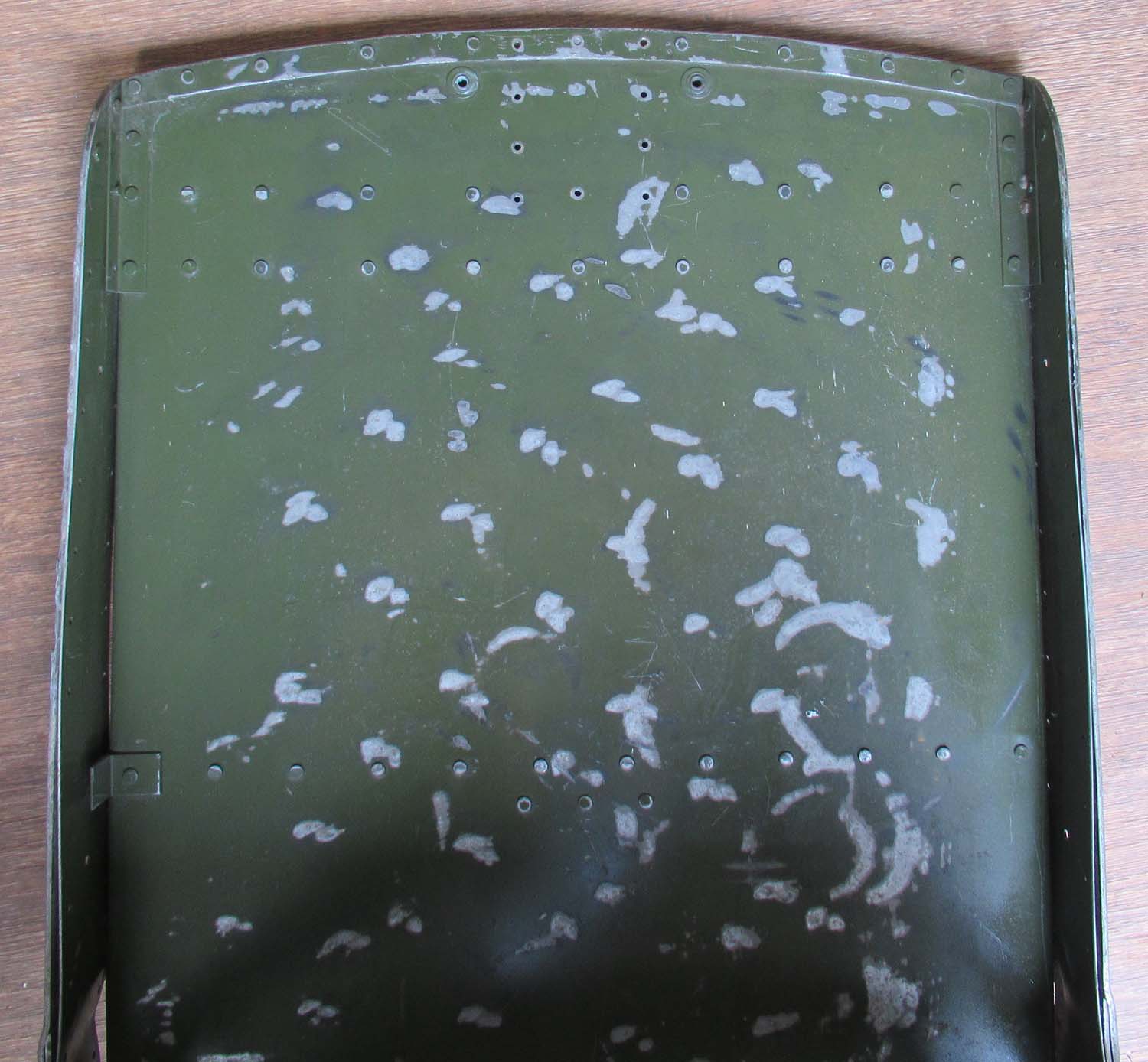

|
Seat
(No 11 pg 1 Seat)
Not
Available yet seeking a positive identity before listing. It
was apparently taken from the wreck of a B24 in Canada but
have yet to confirm its ID
Click on
pictures to enlarge
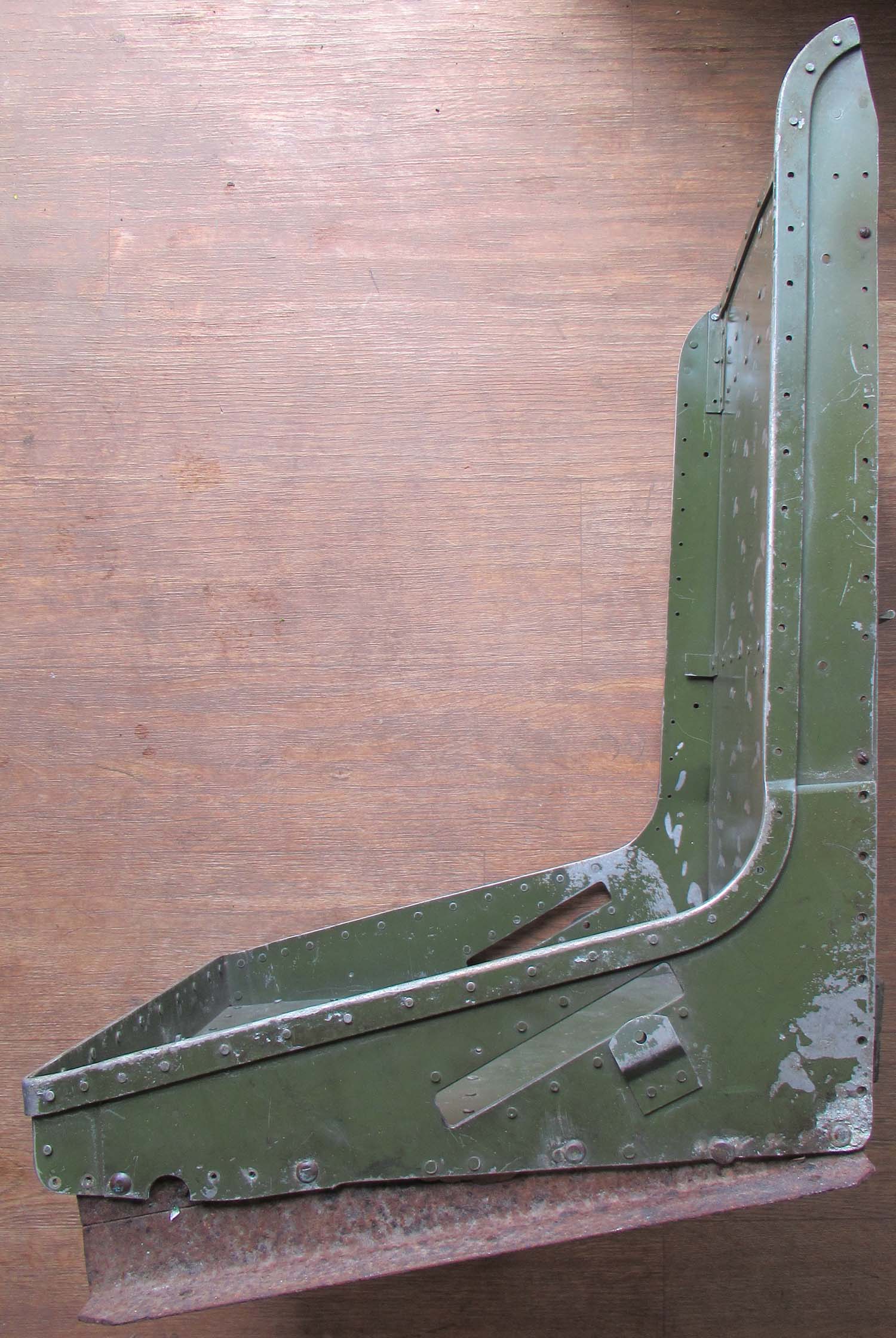
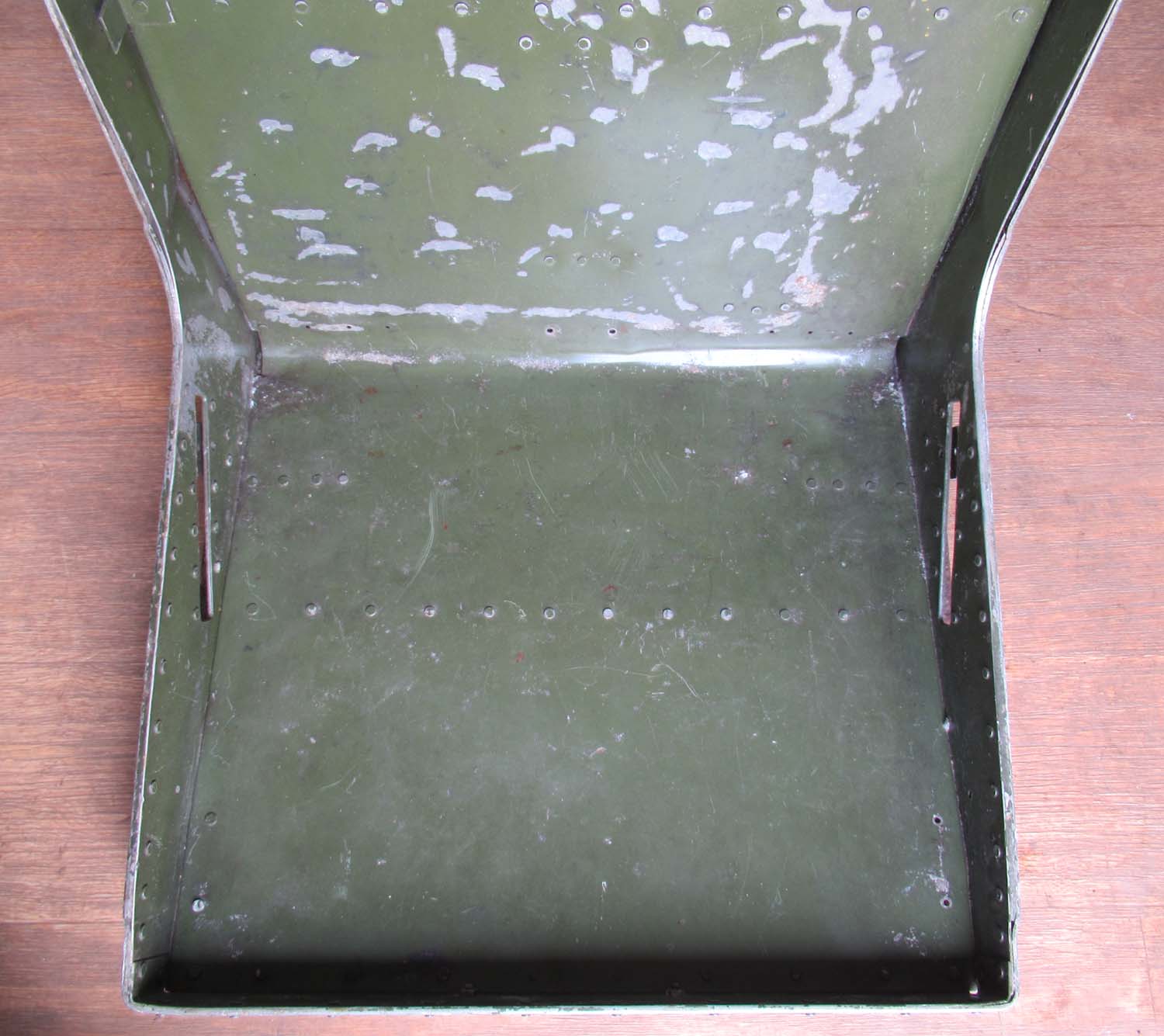
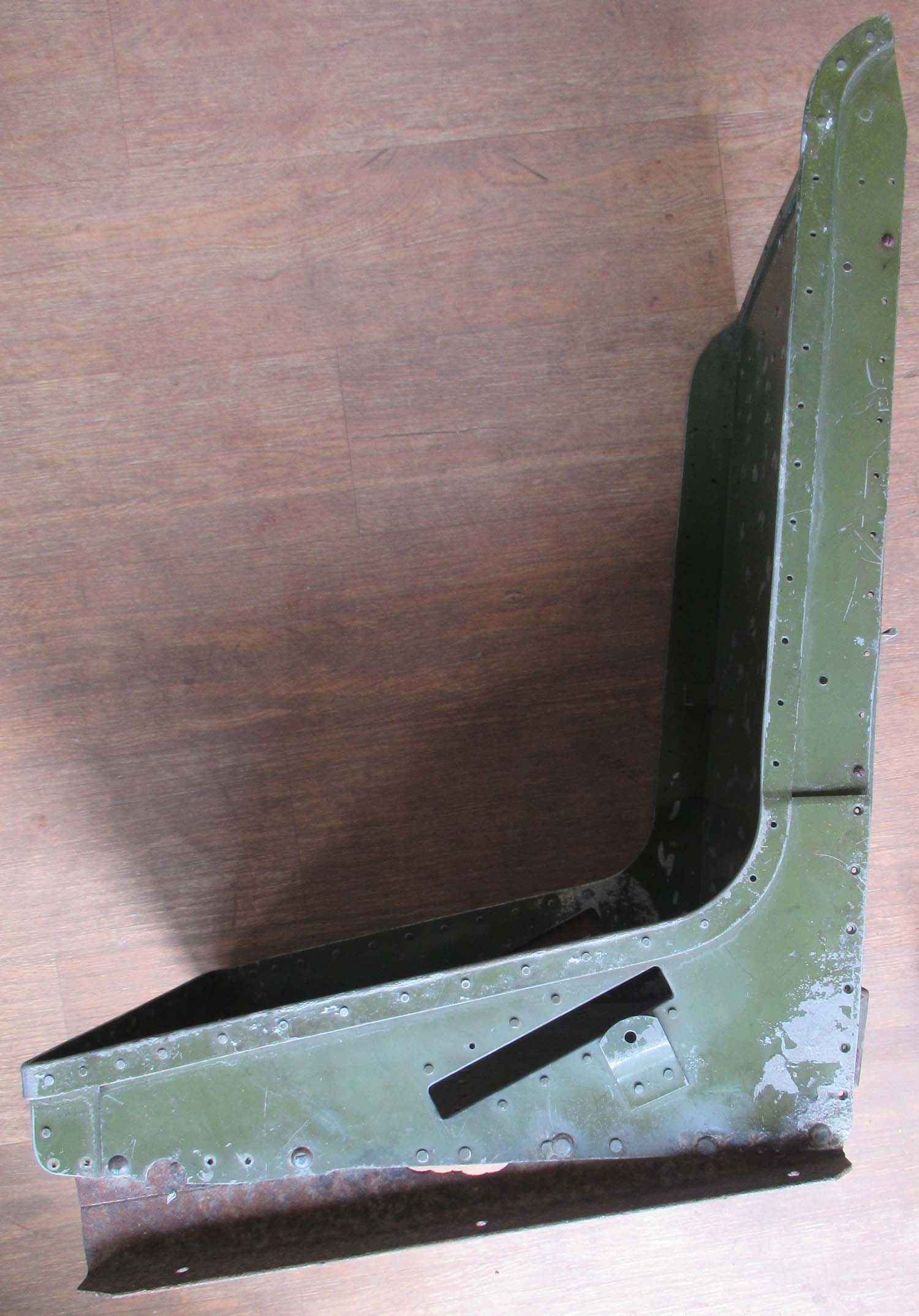
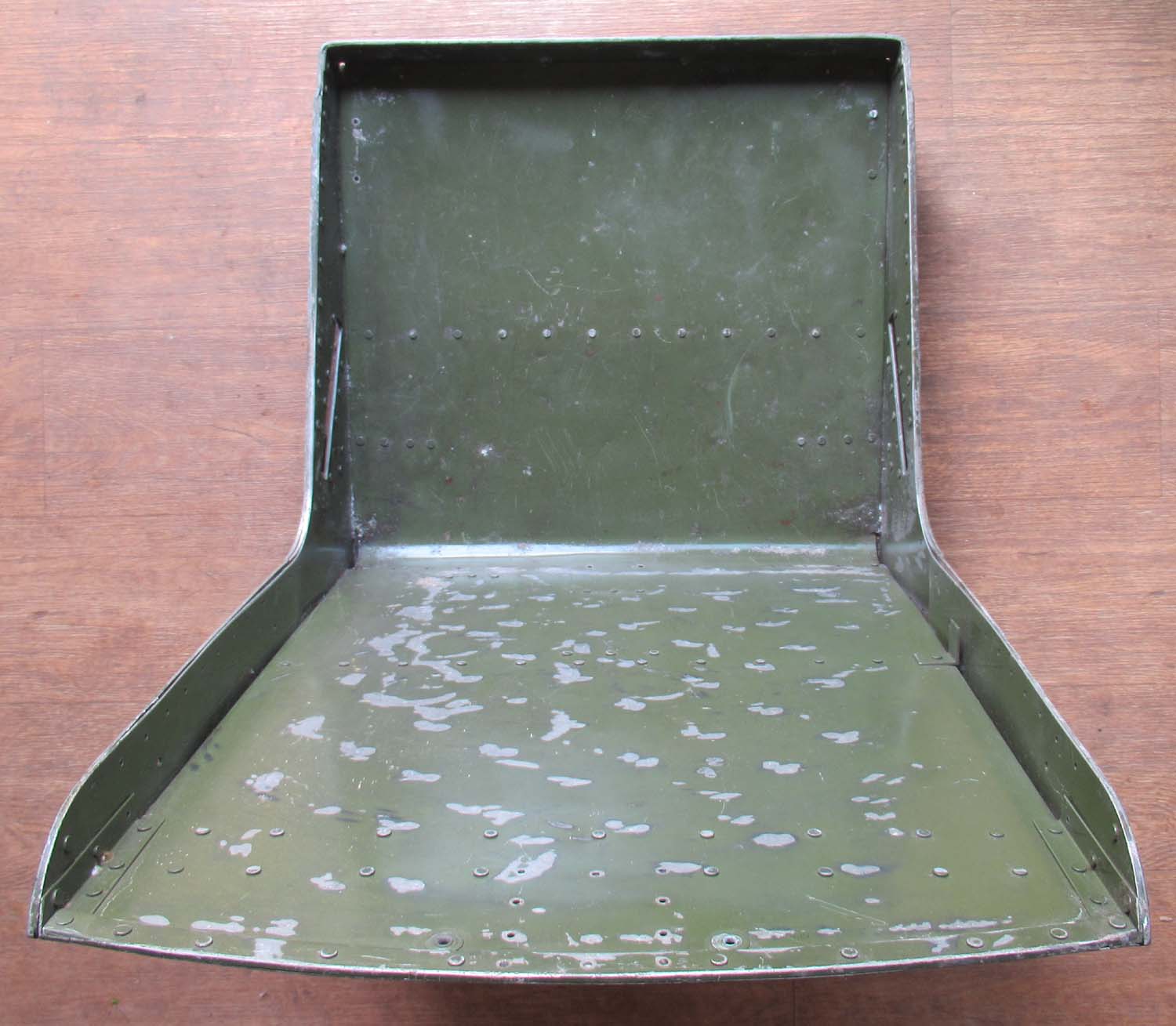
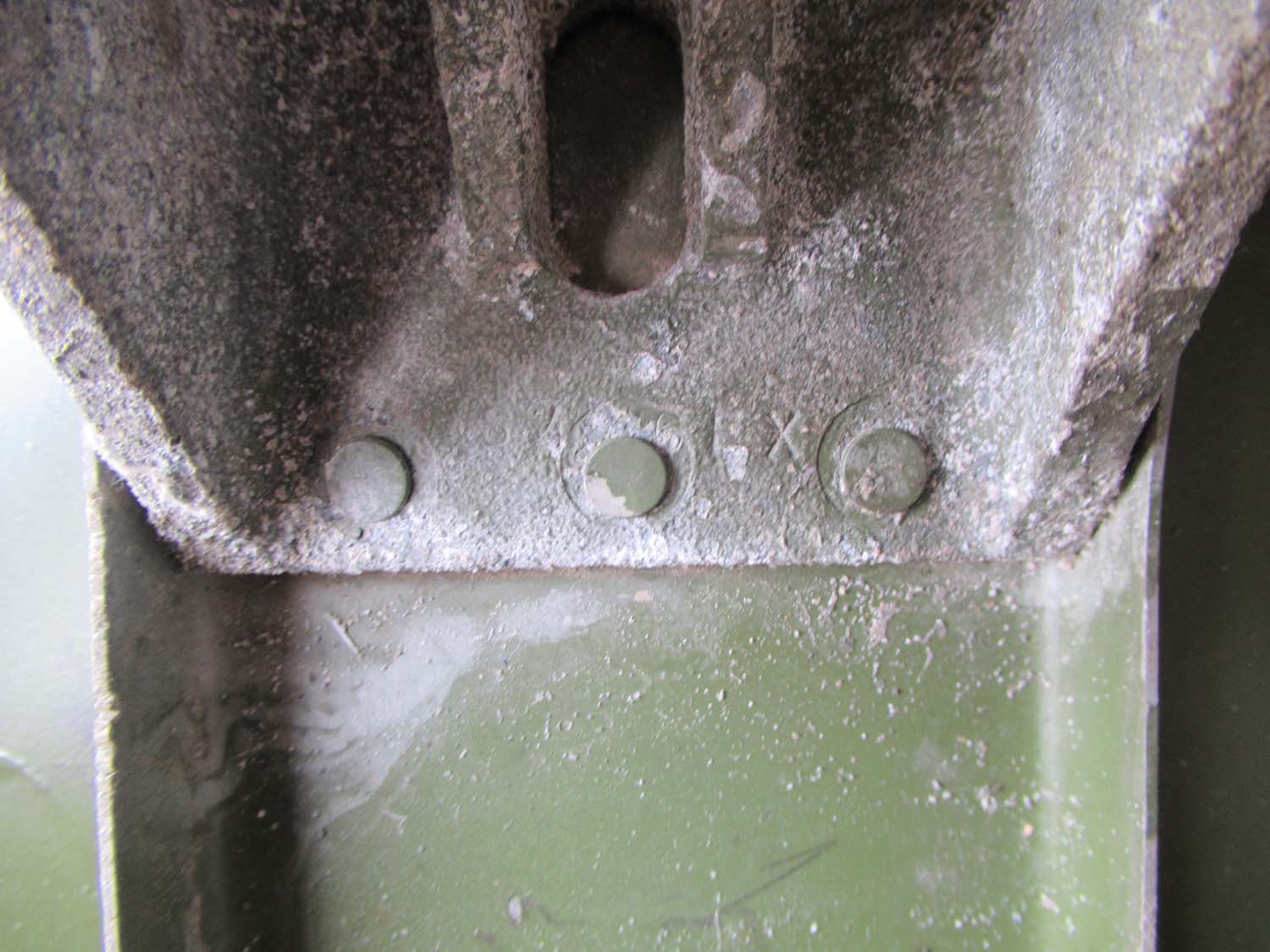
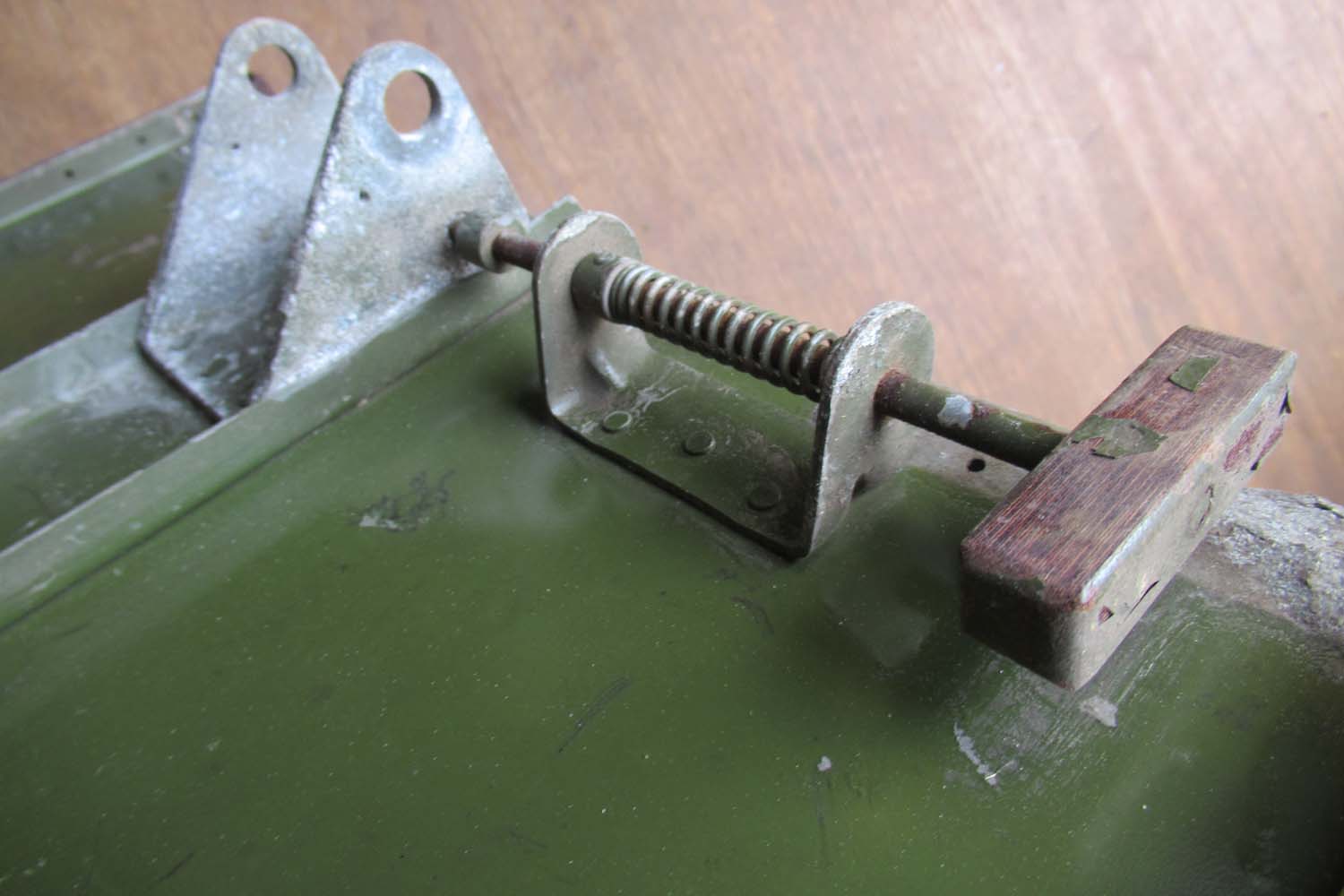

|
|
Click on
pictures to enlarge
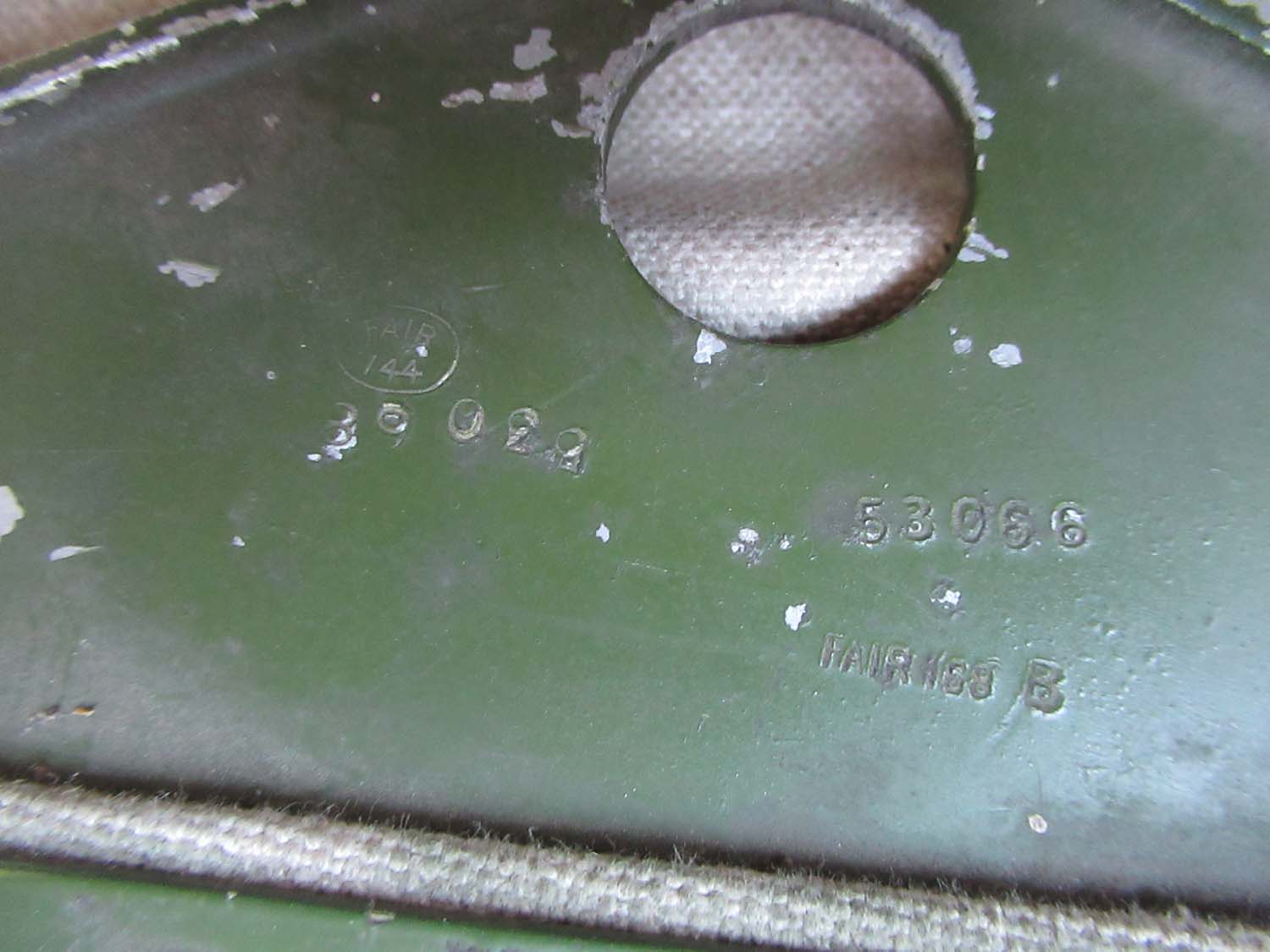
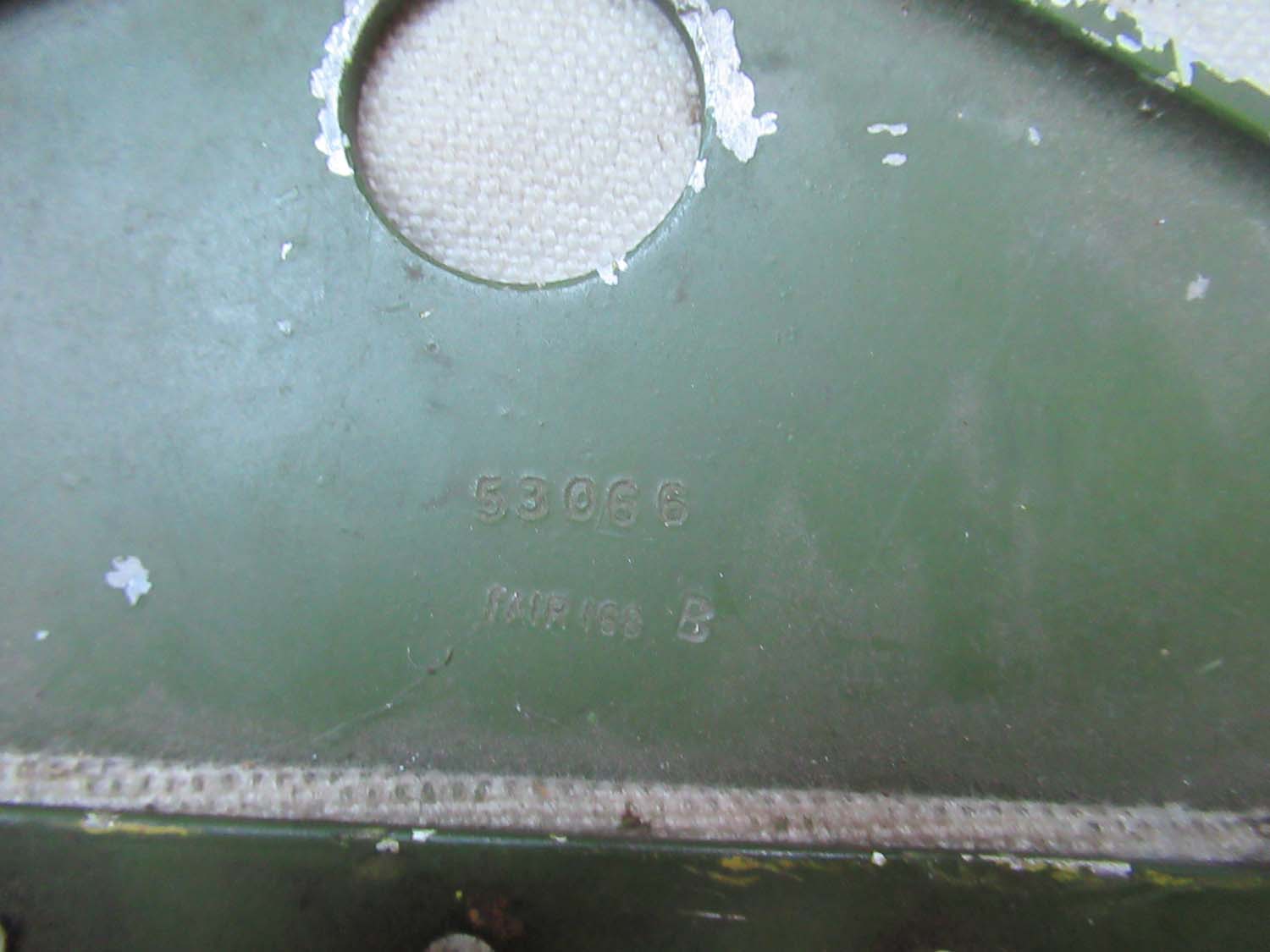

|
Blenhiem/Bolingbroke
Gunners seat back
(No 10 pg 1 Seat)
Here we
have a Blenhiem/Bolingbroke Gunners seat back in nice
original condition.
Click on
pictures to enlarge




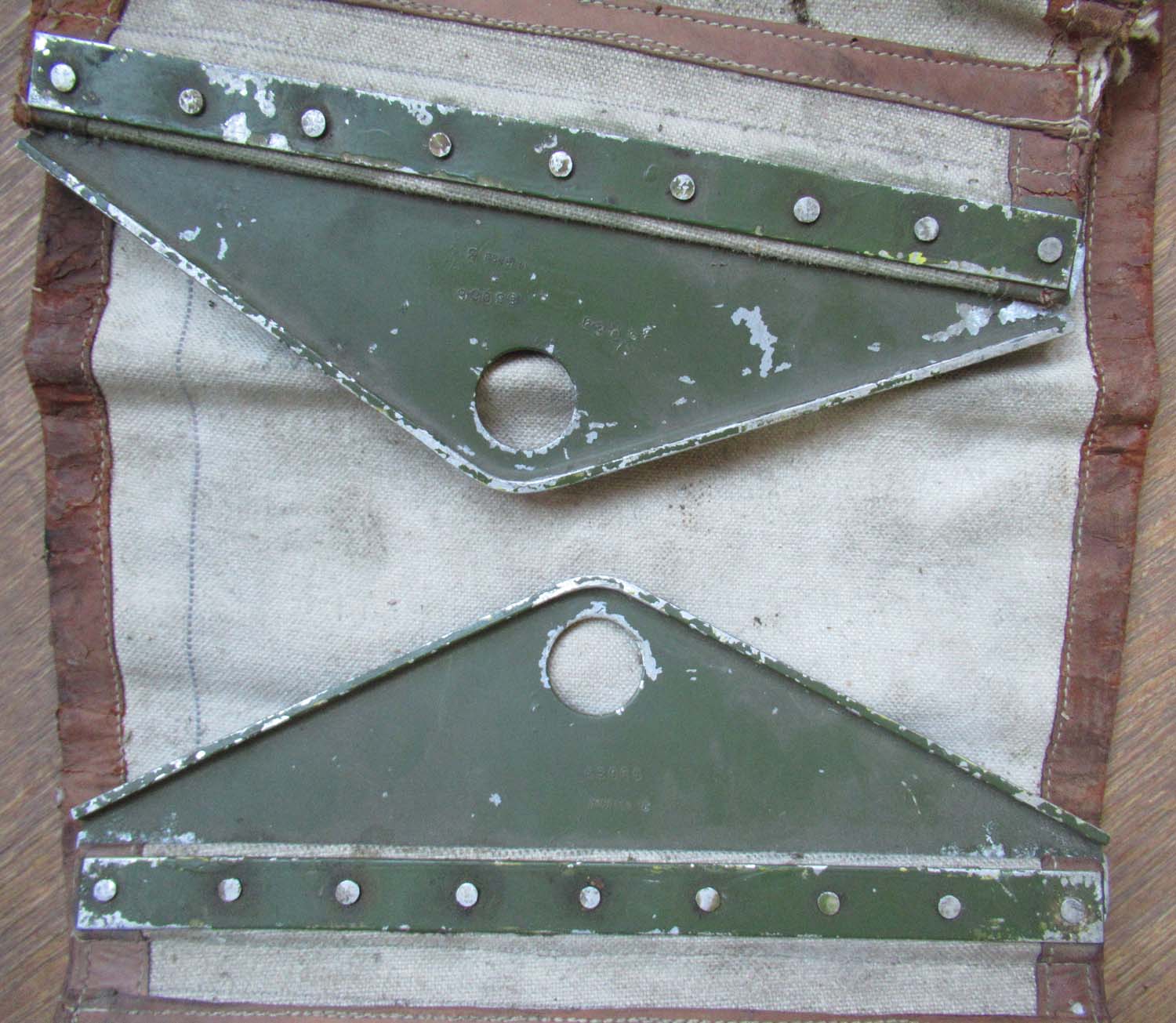
£300


|
|
Click on
pictures to enlarge



|
Supermarine Seafire /
Spitfire Armour
Plate
(No 9 pg 1 Seat)
Here we
have a piece of Armour Plate as Used on the Supermarine
Seafire
This has
the Supermarine Part Number 37727. This shows that is
was used on the Mk. XV Seafire Onwards
377 =
Seafire XV
27 =
Main Fuselage / Hull
Supermarine Seafire XV

Included in this sale are the
rectangular plate and the curved plate shown in the pictures
£375


These
items are heavy overseas buyers please
contact me for a shipping quote.
|
|
Click on
pictures to enlarge






|
Lancaster KB 976 Observer
Seat (No 8 pg 1 Seat)
This is an incredibly rare
perhaps unique peace from Lancaster KB 976. There is lots of
information on this Lancaster online just Google KB 976.
Originally this was a long nose Lancaster used as I
understand as a Marine recognisance aircraft with the RCAF.
This seat was located in
what would of been the bomb aimers position in standard
Lancaster and used by the crew member assigned to scanning
the Ocean on search and rescue and for Russian Submarines..
1944/45 The aircraft was built at Victory Aircraft Works,
Malton, Ontario, Canada as a Lancaster B Mk. X. All Canadian
built Lancasters were Mk Xs, of which 430 were built.
KB976 was part of the first production batch of 300 aircraft
(KB700-KB999) built by Victory Aircraft Limited, Malton and
was fitted with Packard built, Rolls-Royce Merlin 224
engines. Her Victory Aircraft Construction Number is 37277.
24th May 1945 Flown to St. Athan, United Kingdom to join
Royal Canadian Airforce 405 Sqn , No. 32 Maintenance Unit,
as registration LQ-K.
17th June 1945 Returned to Canada to join 664 (Heavy Bomber)
Wing, Greenwood, Nova Scotia for Tiger Force, No. 2 Air
Command.
In June 1948 she was back in service with RCAF as Search and
Rescue aircraft.
Circa 1953 KB976 and 2 other RCAF Lancasters were modified
to
long nose Mk 10 AR (Area Reconnaissance) variant
and assigned to RCAF 408 Sqn(P) with registration MN-976.
(The other 2 AR Lancasters were KB839 and KB882. Used
also for Arctic Reconnaissance, patrolling the polar ice
caps photographing and recording Soviet Submarine movements.
This is a great peace of history
and although its unlikely to find its way back into a
Lancaster would make a superb and unique seat for a Man cave
or bar.
Click on
pictures to enlarge







£1495


Overseas buyers please contact me
for shipping cost
|
|
Click on
pictures to enlarge
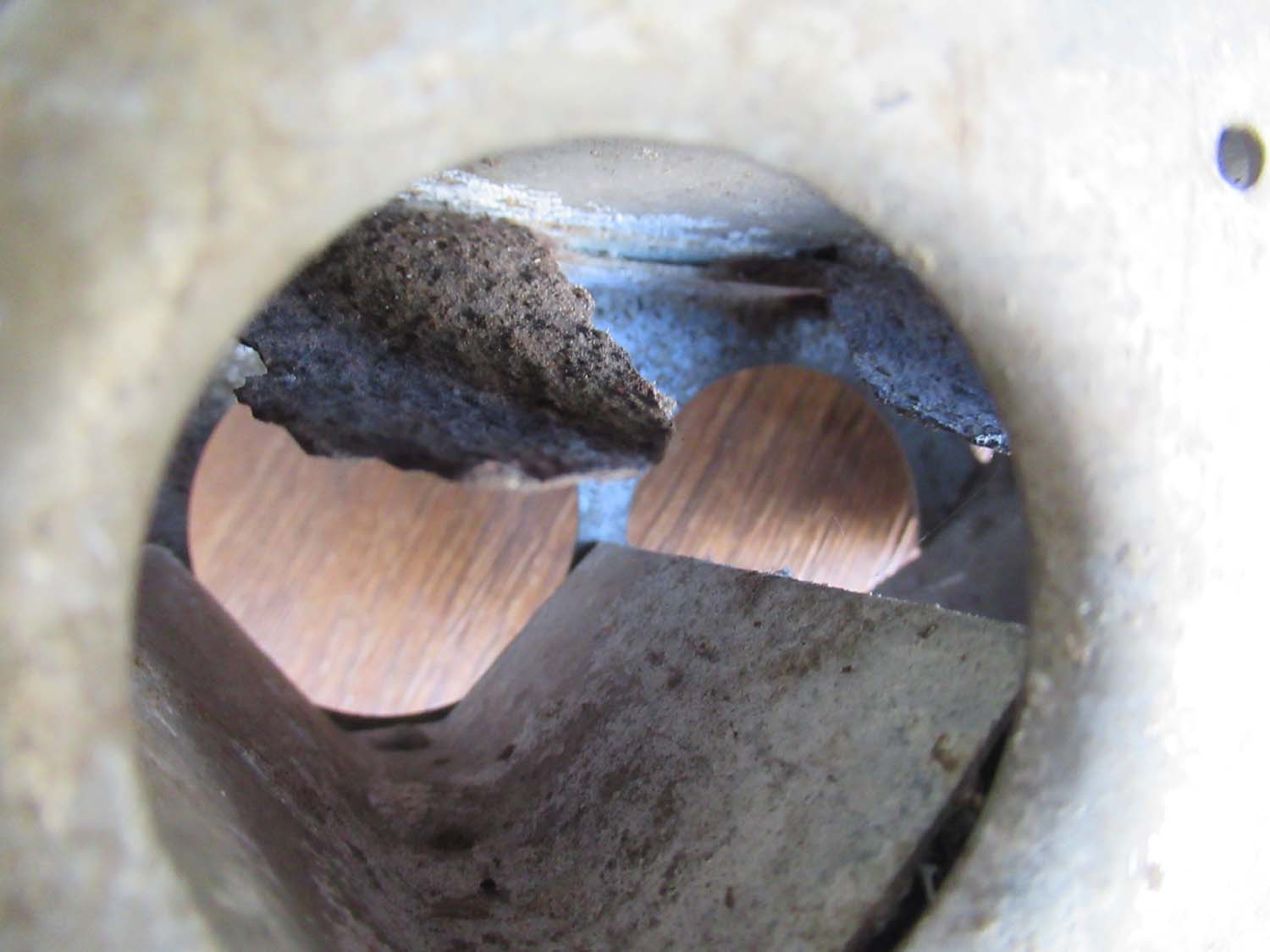
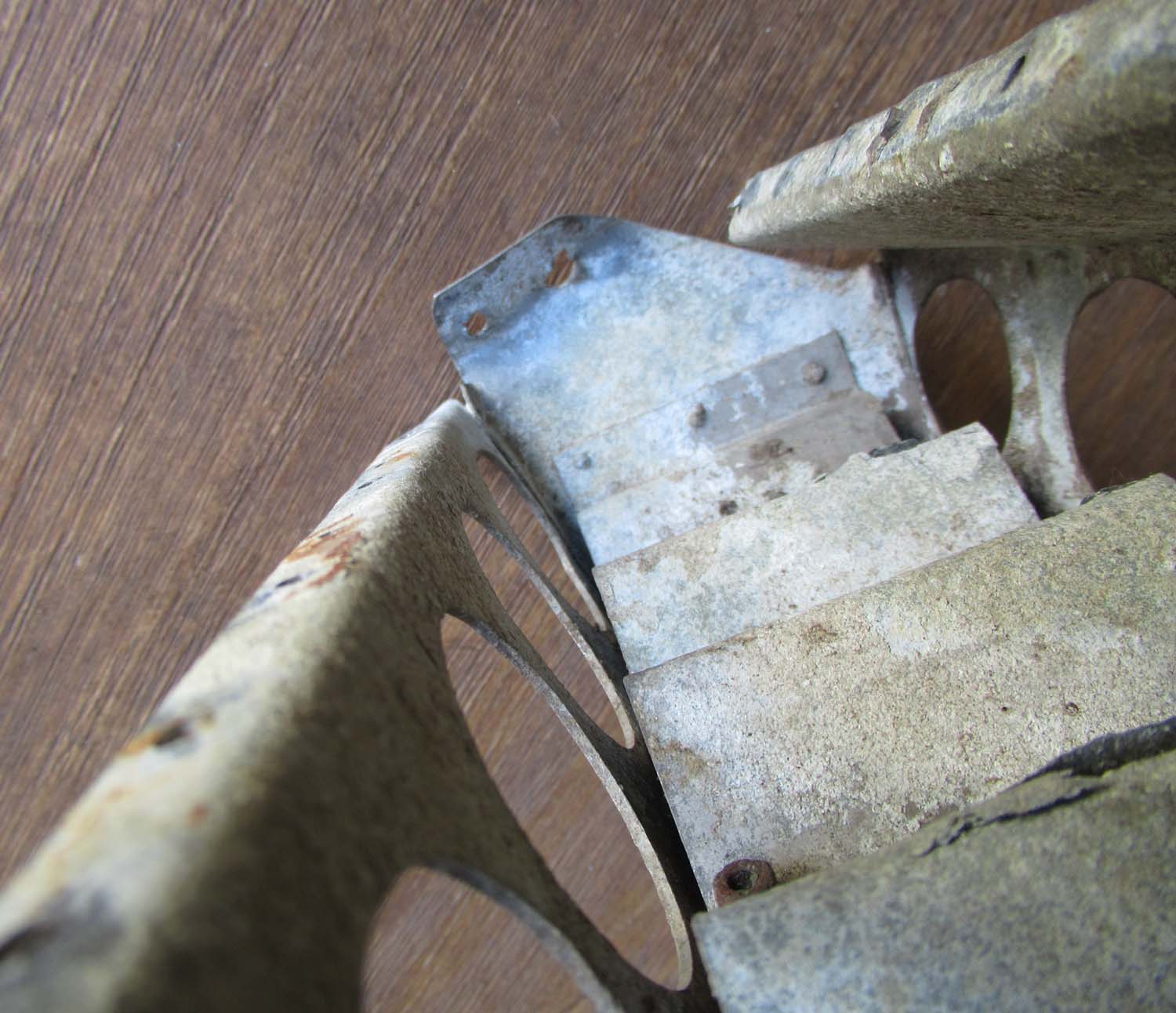
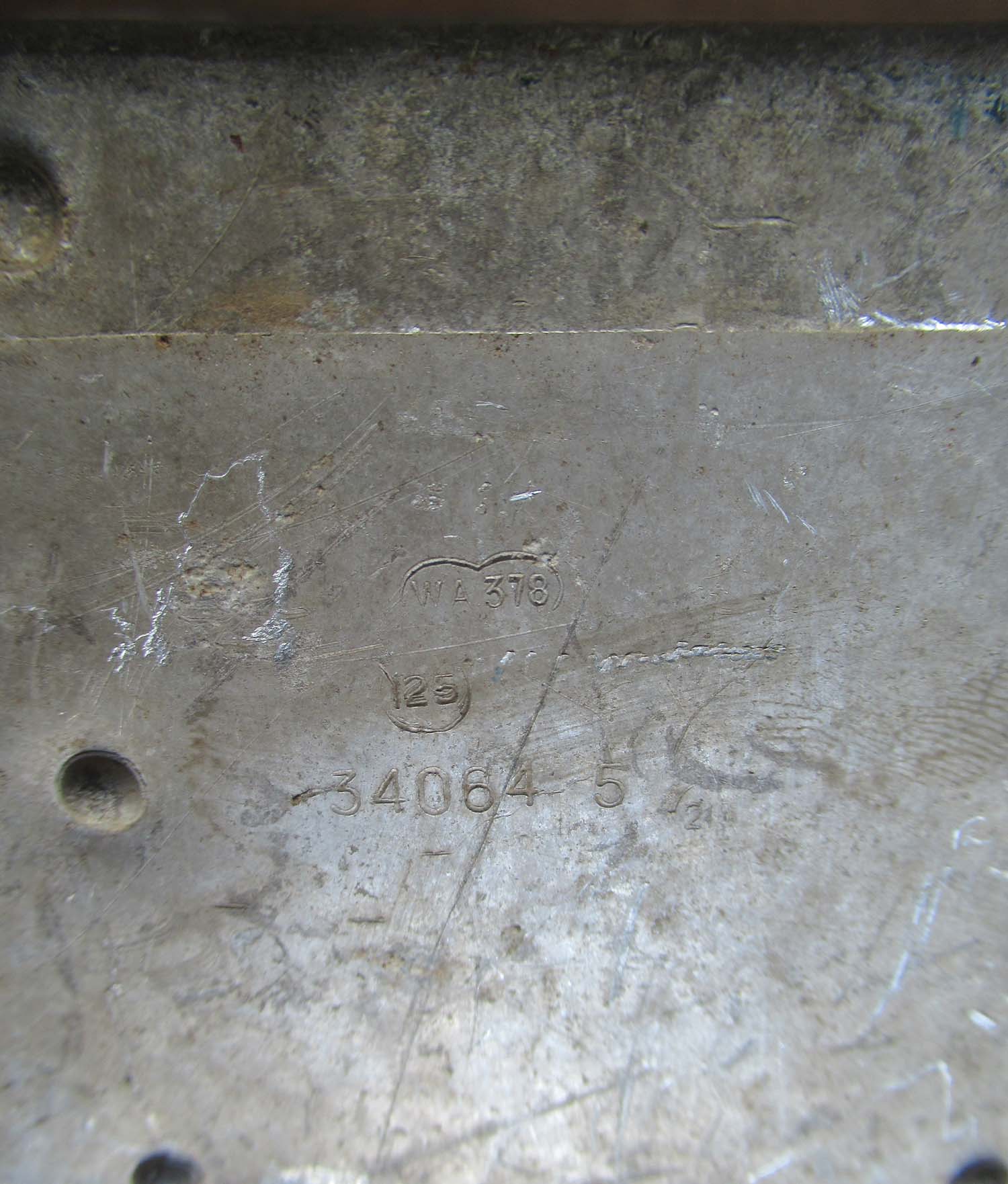
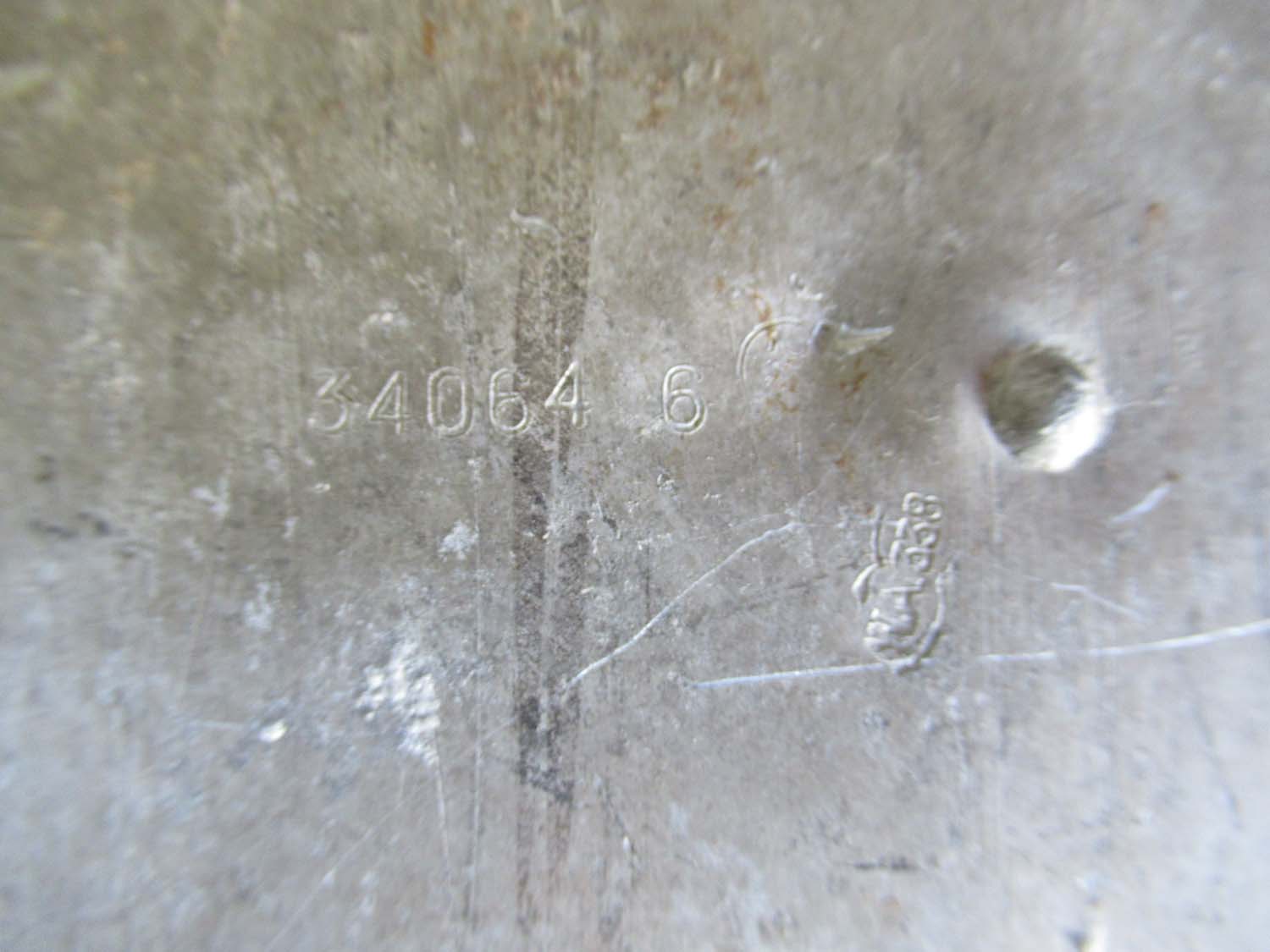
|
Original Seafire
MK IB Flare Holder (No 7 pg 1 Seat)

This really is a superb
and incredibly rare original flare storage for a MK IB
Seafire . It sat at the front of the seat and held
flares for use by the pilot.
It is in good used
condition with some corrosion the six holes at the front
which hold the flairs still have their spring steel clips
which lock the flairs tightly in place.
Click on
pictures to enlarge
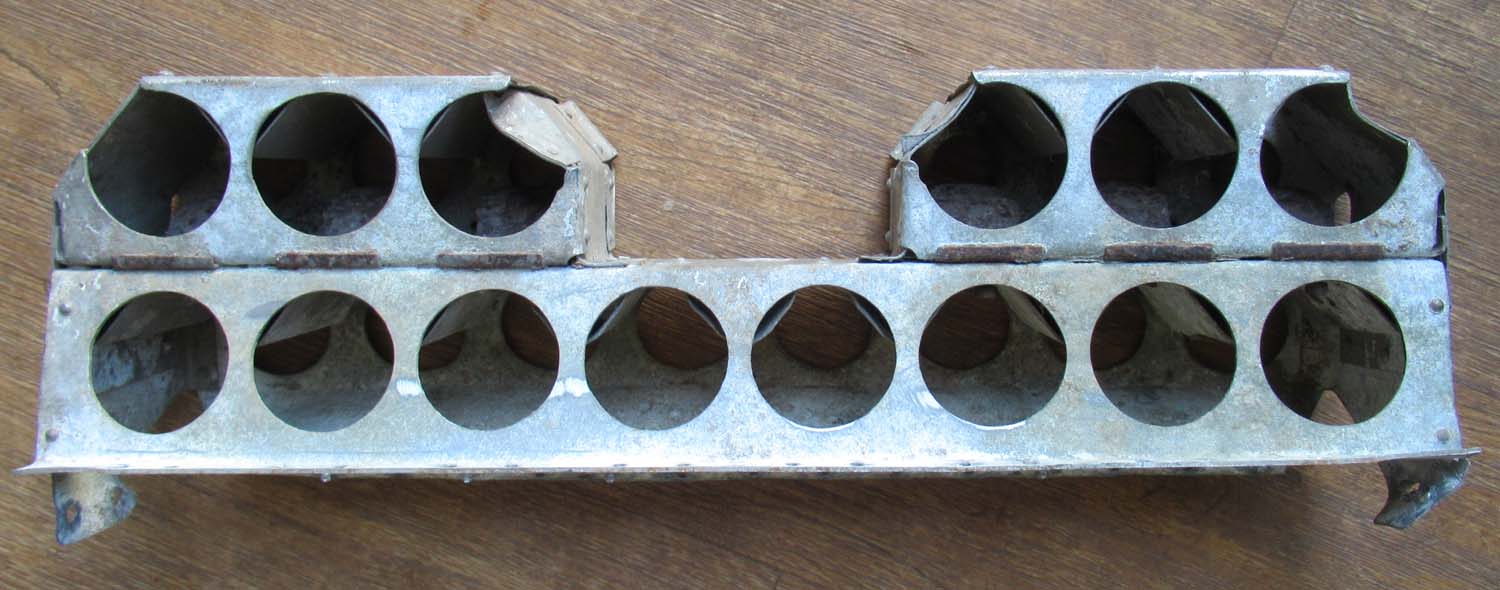
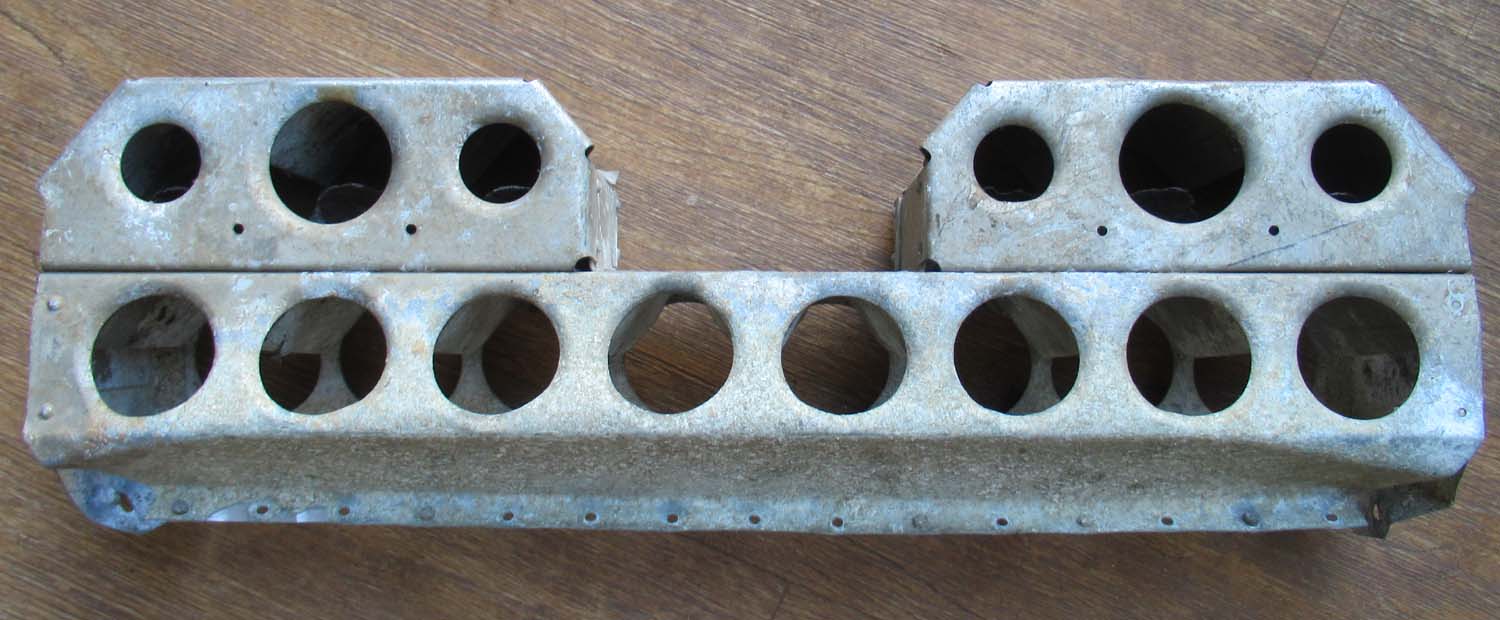

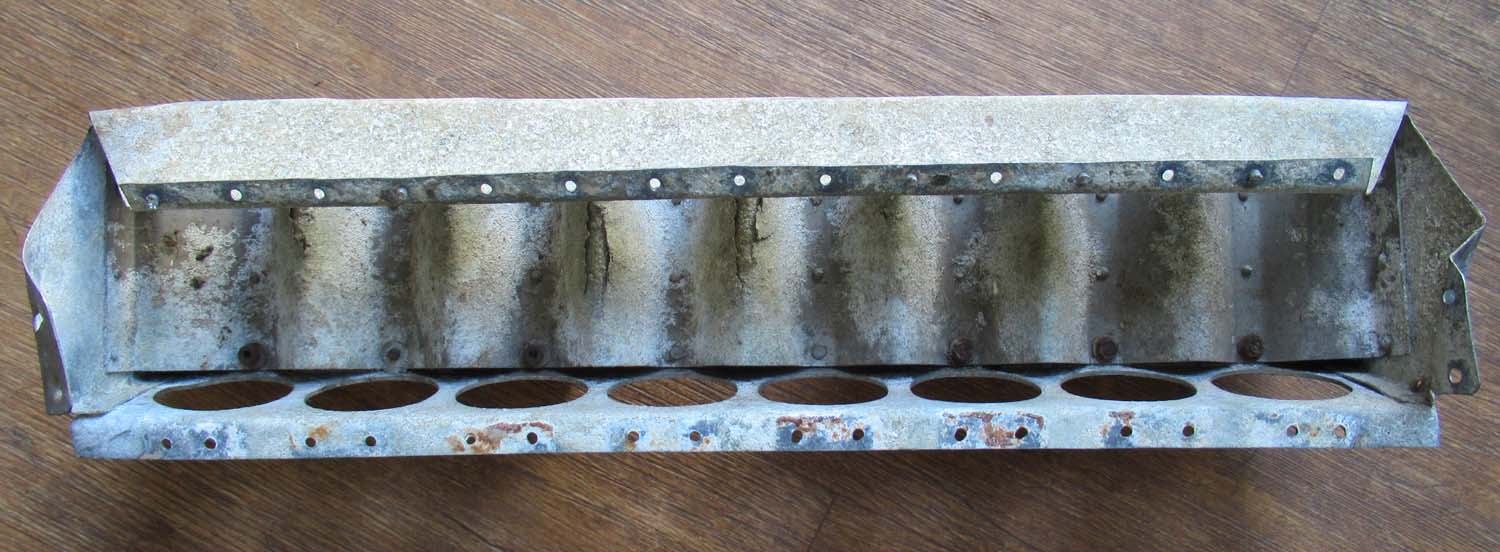
£995


|
|
Click on
pictures to enlarge



|
Hawker
Sea Fury Seat Adjuster TF 956 (No 6 pg 1 Seat)
Here we have a seat adjuster from Sea Fury TF 956.

Shown above
the aircraft this part came from TF 956
First flight 05Sep 1947 and delivered to the
Royal Navy in Oct47. In 1950 it was operating from HMS
Theseus off the Korean coast coded 123-T during the Korean
War.
From 1963 to 1970 it was in store with Hawker Siddeley
at Langley.
In 1970 it was transferred to the FAAHF based at
Yeovilton.
On 10th Jun 1989 after several attempts to get the
undercarriage to lower fully including bouncing along the
runaway on one undercarriage leg the pilot was forced to
bale out and the aircraft crashed into the sea off Prestwick
and was destroyed.
Click on
pictures to enlarge




£275


|
|
Click on
pictures to enlarge


|
Airspeed Oxford
Pilots Seat (No 5 pg 1 Seat)
Here is a Pilots seat for an
airspeed oxford in very nice complete original condition.


The
Airspeed A.S.10 Oxford was a multi-engine three-seat
advanced trainer monoplane used as a military trainer by the
RAF in the 1930's.
The Oxford
was developed to fit specifications T.23/26 for a trainer
aircraft, and the prototype Oxford which first flew in 1937,
was the military version of the Airspeed Envoy.
The
aircraft was of the cantilever low-wing monoplane type,
powered by two Armstrong Siddeley Cheetah air-cooled radial
engines of 375 hp, giving a speed of 190 mph at 10,000 feet.
The the start of WWII
Oxfords were selected as training aircraft in Canada,
Australia and New Zealand as part of the Empire Air Training
Scheme .
The
first aircraft, P6878, was received on 5
November 1940 and the last, LW999, on 12 March 1944. They
were delivered between August 1940 and November 1.
The
Oxford served from October 1940 until the last Oxford was
retired from service in 1949.
Click on
pictures to enlarge


£1495


Overseas buyers please contact me for
shipping cost
|
|
Click on
pictures to enlarge



|
Supermarine Spitfire Seat
Armour Seat
(No 4 pg 1 Seat)
Here we
have a piece of Seat Armour from the Supermarine Spitfire
This has
the Supermarine Part Number 35962 which shows that it
was used on the Mk.21 Spitfire onwards
356 =
Spitfire 21
62 =
Armament
Supermarine Spitfire 21

£299


|
|
Click on
pictures to enlarge


£195


|
Venom Seat Adjuster
Seat (No 3 pg 1
Seat)
This seat
adjuster was fitted to seats made of paxolin seats a type of
paper. These seats were fitted to a range of aircraft
including the Vampire and Hornet but this example carries
the Venom part code.

The de Havilland DH 112 Venom is a British
post-war single-engine jet aircraft developed and
manufactured by the de Havilland Aircraft Company. Much of
its design was derived from the de Havilland Vampire, the
firm's first jet-powered combat aircraft
|
|
Click on pictures to enlarge

.


£1850


Overseas buyers please contact me for
shipping cost
|
Focke-Wulf 190
Seat (No 2 pg1 Seat)



Here is a reproduction Pilots Seat, rear armour and mounting bracket as used in the FW190
Its made from thick solid
steel exactly like the original and is very good quality.
It appears complete except for the seat pan.
What you see in the pictures is what you will receive.
The FW 190 was a formidable
aircraft and gave the Luftwaffe air superiority over the
Spitfire MK V when it appeared in August 1941.
The RAF answered this threat
by rushing the Spitfire MK IX into service powered by the
twin stage supercharged Merlin 66.
The MK IX was in all regards
equal or slightly superior to the FW 190.
Had it not been for the
appearance of the FW 190 the MK IX Spitfire would
never existed the MK V was due to be replaced by the MK VIII
with a retracting tail wheel but was not ready in time, the
MK IX became the most numerous of the Spitfires ever to be
produced.

Shown above
the stunning Mk IX Spitfire introduced as a direct result of
the FW 190.
|
|
Click on pictures to enlarge


£1200


Overseas buyers please contact me for
shipping cost
|
MK I Vickers
Wellington Front Turret Seat Barnes Wallis Seat (No 1 pg 1
Seat)
This seat is unique it was
designed by Barnes Wallis for the front gunner in the
Wellington MK I and is the only known surviving example.
It was only fitted to the
Wellington MK I and was replaced in the MK IA
with Frazer-Nash two gun turrets FN5
nose, FN10 tail and FN9 ventral explaining why it is so
rare.
Its
identity has been confirmed by the RAF Museum.
Click on pictures to enlarge
   
It
came with three peaces of Perspex and these are believed to
belong to the original Barnes Wallis designed MK I
Wellington and will be included in the sale.
One of the larger peaces
of Perspex was cracked but has been rejoined. As you
can see from the drawing under it is a relatively simple
design and would make a great project to build in its
original configuration.
Below
you can see the seat in situ in a MK I Click on the picture
to enlarge.

|
|






 |
Battle of
Britain Spitfire Seat (pg1 Seat)
Spitfire
Spares
exclusively offers this superb reproduction of a pre 1940
Spitfire Pilots seat.
You can see from the pictures the quality is second to none
and a credit to the team that put these superb creations
together.
Spitfires
flown in the Battle of Britain and manufactured before March
1940 were fitted with the earlier all metal version cockpit
seat.
In the factories, the metal seats were
fitted to Mk I & IIs and many of those converted to Mk Vs.
During the war the metal seat variant
found its way into many of the later Mks of Spitfire and
(today, some airworthy Spitfires fit the early metal version
due to its inherently stronger design in preference to the
more common later brown 'compressed paper' version.)
Picture under shows the metal
type seat attached to frame 11, ready for installation in a
Spitfire under restoration.

Using Supermarine drawings and
measurements from original items we have recently finalised
accurate Jigs to re-manufacture these Spitfire seats.
We can now manufacture new
seats which are extremely accurate and faithful to those
that would have originally been fitted to early
Spitfires.

Being totally hand crafted, it has proved
hugely time consuming to make.
So please be aware that due to
the labour intensive methods used these seats will be
available in very limited numbers.

The seats manufactured are all aluminium as illustrated
here.
They are manufactured from 16-18 swg Aircraft Grade
aluminium Material.
For
accuracy the pattern parts are marked & cut using template
dimensions from original drawings.

The aluminium is then heat worked, hammered,
rolled, press formed folded and finally Englished wheeled,
to form all the complex curves.
All surfaces and edges are then finished.
Components are then jig clamped, riveted, and finally
*coated
in aircraft oxide matt green.

This is an extremely difficult piece of the Spitfire
aircraft to get in such accurate and correct materials.
The seat offered here will obviously make
completion of a cockpit or aircraft rebuild significantly
easier.


*Seats are supplied
unpainted, but can be provided coated in Oxide Matt green on
request and confirmation of order for additional charge of
£55.
Price on application
contact me
|

Click on the
MK I Vickers Wellington Front Turret 30at Barnes Wallis Seat (No 1 pg1 Seat)
arge
|
MK I Vickers Wellington Front Turret Seat Barnes Wallis Seat (No 1 pg1 Seat)
="#008000">
Hurricane seat adjuster
Seat 5 (pg1
Seat)
Hurricane
seat adjustment lever has some damage see the picture.
Out of
stock more wanted please
contact me
|

Click on the
picture to enlarge

Seen below
fitted to the parachute

|
Luftwaffe
FW190 A 8 pilot's parachute backpack part Seat 6
(pg1 Seat)
Here is
WW2 German Luftwaffe FW190 A 8 pilot's parachute backpack
part . The German FW190 pilot used a backpack type parachute
which had a metal pan as part of the construction, this is
the metal pan, which would have contained the parachute. If
you look at the reference picture of a FW190 pilot backpack
type parachute, you can see this metal pan . The piece has a
50 calibre bullet hole right through the centre and clearly
did not have a good out come for this Pilot.

Purchased
on our trip to
Arnhem and recovered in the
local area so probably a victim of this battle..
The
parachute can be clearly seen on this picture of a FW 190
Pilot

Out of
stock more wanted please
contact me
|



|
Mustang P51,seat
harness reel Seat 7 (pg1 Seat)
This is a Excellent complete unused serviceable Pilots seat
harness inertia reel.
It is Similar to the modern day
seat belt allowing the pilot to move but holding firmly in a
crash situation.
This harness reel also has quick
release.
Used in a variety of USAF aircraft
including the Mustang and Thunderbolt.
Click on the
pictures to enlarge

Out of stock more wanted
contact me |
|
Click on the
picture's to enlarge


Out of
stock
|
Original Hurricane Pilot
seat 8A (pg1 Seat)
This seat
is a superb piece complete with its frame and height
adjustment handle which works as it was intended. This seat
was a barn find in Holland.
   
Click on the
picture's to enlarge


|
|

Click on the
pictures to enlarge them.
The four-engine Halifax was an important bomber which played
a major role in the Bomber Offensive, though it was never as
successful as the Lancaster. The Halifax was repeatedly
updated to try and improve handling problems and poor engine
performance which made it more vulnerable to flak and
fighters and thus caused an increased loss rate. Later
versions were much improved |
Halifax Radio
Operators chair seat 10 (pg1 Seat)
Thank
you to Cees Broere for
this updated information originally advertised as
Lancaster,
Here we have a superb 100%
original Radio operator / Flight Engineers chair from a
Halifax. It is in excellent condition and is extremely
light. It seems to be made of magnesium alloy. We have two
of these seats available and the second is in the same
condition as the first example shown.

This Carries the Part Number
571055/C19

Click on the
pictures to enlarge them.
Out of stock
more wanted please
contact me |
|
Click on the
pictures to enlarge them.


|
Spitfire seat part (Pilots seat 15 pg1 Seat)
Here is a part from a
Spitfire seat its position is shown in the picture bottom
right. It has come from a crashed aircraft but would appear
to be a usable part.
Click on the
pictures to enlarge them.




Out of stock more wanted please
contact me


|

Click on the
pictures to enlarge them.


Out of stock more wanted
contact us |
Boeing B17
Flying Fortress navigators seat 1 (pg1 Seat)
Here is a navigators seat
complete with its bracket from a B17G recovered from
Grafton Underwood. Its in nice original condition and still
usable for static purposes. It is obviously missing its
padding but this should be an easy fix. I should add that
when I purchased the seat it had a label stating it was from
Grafton Underwood I have no further provenance for this
piece the history of that B17 is posted under.
On Monday 19 March 1945, residents
local to Reigate Hill tried to
rescue nine airmen from the remains
of a B17 Bomber which had crashed
into the side of the hill at 5.40pm.
Sadly there were no survivors.
The bomber,
a Flying Fortress, was part of the
US 384th Bomber Group based at
station 106, Grafton-Underwood in
Northamptonshire. The crew had taken
off that morning to assist with a
raid on Plauen close to the Czech
border. Usually returning from the
continent in a defensive formation,
low thick cloud over the Weald and
Surrey meant that the formation
split, leaving Flying Fortress
43-39035 SO-F to fly home on her
own.The crew were nine hours into
their day and returning home from
their third mission in four days,
taking their total number of
missions to 13.
Why the crash happened still
isn't known. The aircraft flew low
over the rooftops of Reigate and at
dusk, hit the top of the trees on
the hill. Travelling at 160mph, it
then crashed into the hill. Its
fuselage was brought to a stop in
200 yards whilst the Fortress's
engines were sheared from its wings
and came to a final resting spot in
the field beyond. To this day, there
is still a gap in the trees at the
crash site.
The nine crew died instantly or
soon after the crash and their
memorial is a bench at the site.
Their names and ranks were:
Pilot 2nd Lt Robert S. Griffin;
Co-pilot 2nd Lt Herbert S. Geller;
Navigator 2nd Lt Royal A. Runyan;
Togglier Sgt Donal W. Jeffrey;
Radio Operator Sgt Philip J.
Phillips;
Engineer Sgt Robert F. Marshall;
Ball Turret Gunner Sgt William R.
Irons;
Waist Gunner Sgt Thomas J. Hickey:
Tail Gunner S/Sgt Robert F. Manbeck
|
|

Click on the
picture's to enlarge.

 |
P-38 Lightning Seat 3 (pg1 Seat)
Here we have the Seat from a
P-38 Lightning. This was purchased on our latest trip to
Arnhem. It is Straight and has the seat adjuster
levers as well as the bracket for the urine tube
We brought this as a Seat
from a P-38 that was flown by Victor Grambo and Crashed at
Drenthe Railway Station and cart wheeled down the track.
Unfortunately We Cannot find
out any more information on this Crash
Lockheed P-38
Lightning

The Lockheed P-38 Lightning was a World War II American
fighter aircraft built by Lockheed. Developed to a United
States Army Air Corps requirement, the P-38 had distinctive
twin booms and a single, central nacelle containing the
cockpit and armament.
the P-38 was used in
a number of roles, including dive bombing, level bombing,
ground-attack, night fighting, photo reconnaissance
missions, and extensively as a long-range escort fighter
when equipped with drop tanks under its wings.
The P-38's service
record shows mixed results, but usually because of
misinformation. P-38s have been described as being harder to
fly than single-engine aircraft, but this was because of
inadequate training in the first few months of the war. The
P-38's engine troubles at high altitudes only occurred with
the Eighth Air Force. One reason for this was the inadequate
cooling systems of the G and H models; the improved P-38 J
and L had tremendous success flying out of Italy into
Germany at all altitudes
A little-known role
of the P-38 in the European theatre was that of
fighter-bomber during the invasion of Normandy and the
Allied advance across France into Germany. Assigned to the
IX Tactical Air Command, the 370th Fighter Group and its
P-38s initially flew missions from England, dive-bombing
radar installations, enemy armor, troop concentrations, and
flak towers.

Out of stock
more wanted
contact me
|

Click on the
pictures to enlarge them
 |
Seat Harness recoil unit Seat 11 (pg1 Seat)
This attaches to the seat
belt harness shown in the above page, it allows the harness
to extend much like a modern car seat belt. This unit was
fitted to many wartime fighters including the Spitfire, The
unit is complete and in good condition, This example comes
unboxed
This has Part Number AS2819-4

Seen in
situ in a Spitfire above centre.
Out of stock more wanted
contact me |




































































































































































